据丹麦皇家艺术学院院长马库斯·阿米纳卡·威尔蒙特介绍,尽管面临重重困难,2025届的学生们依然寻找并发现了希望的曙光。"我认为这届学生最显著的特点是,他们面对周遭发生的一切时,不是以悲伤回应,"他表示,"仿佛正因为现实如此黑暗,他们反而更加坚定地选择创造充满希望和积极向上的作品。所有的设计系列都源自极其乐观的叙事,充满温暖和亲近感。"
According to Royal Danish Academy dean Marcus Aminaka Wilmont, the class of 2025 has looked for andfound silver linings, despite the odds. “I think if there’s one thing that really characterizes the students, it’s that they’re responding to everything that’s happening around them, not with sadness,” he said. “It’s almost like things are so dark that they’ve embraced that they just have to do something hopeful and something positive. All the collections stem from incredibly hopeful narratives and warmth and closeness.”Heritage continues to be a topic students are exploring.
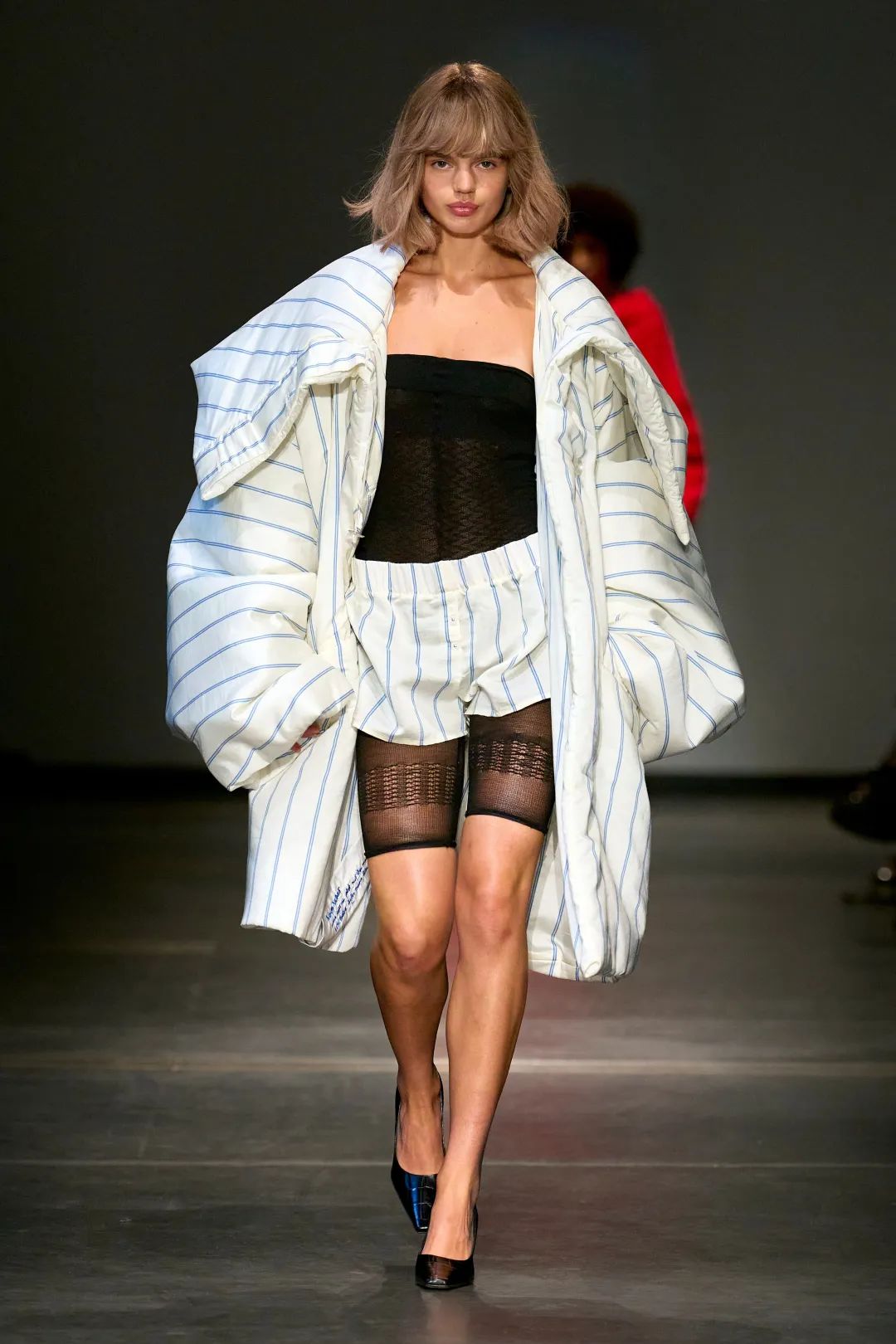
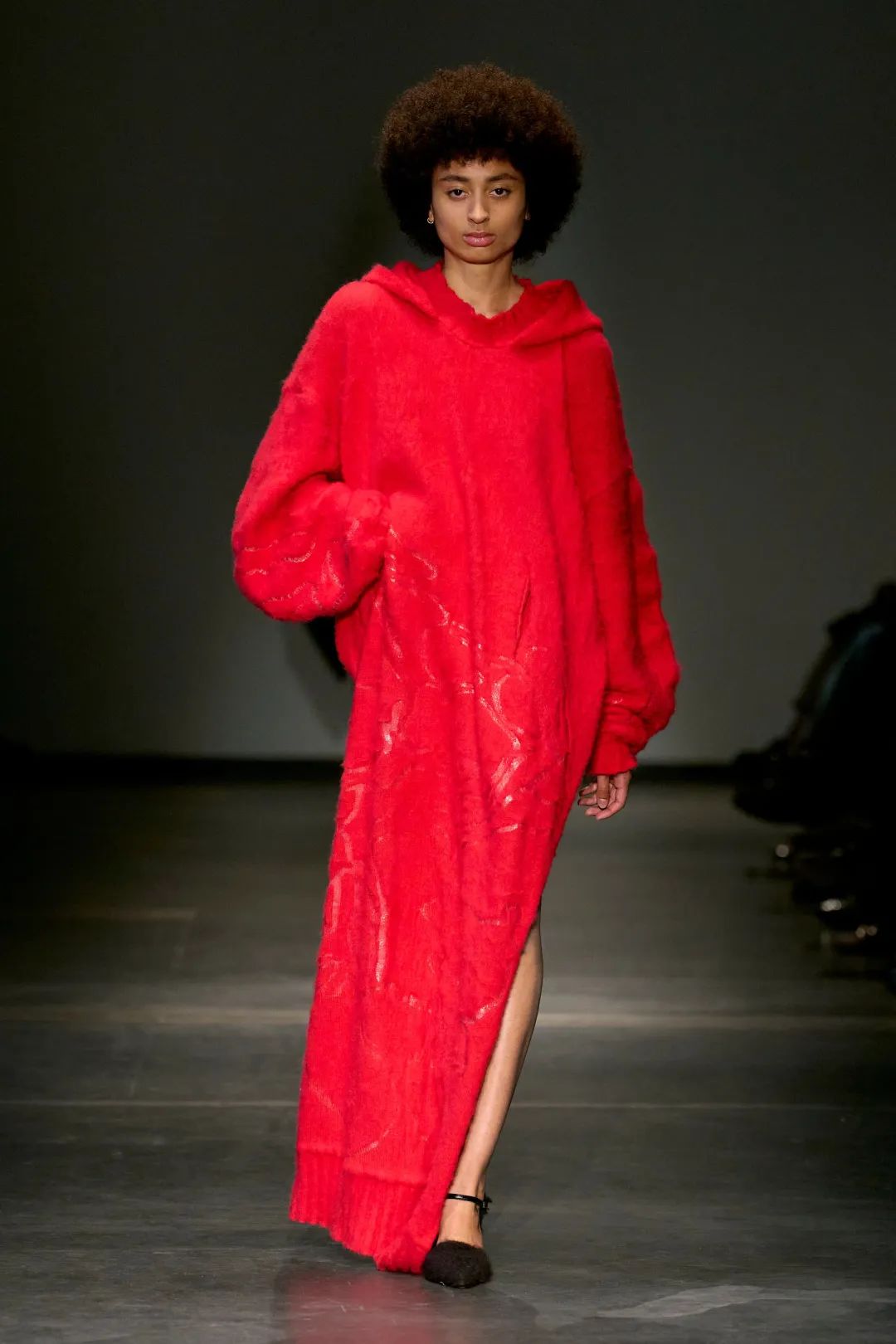
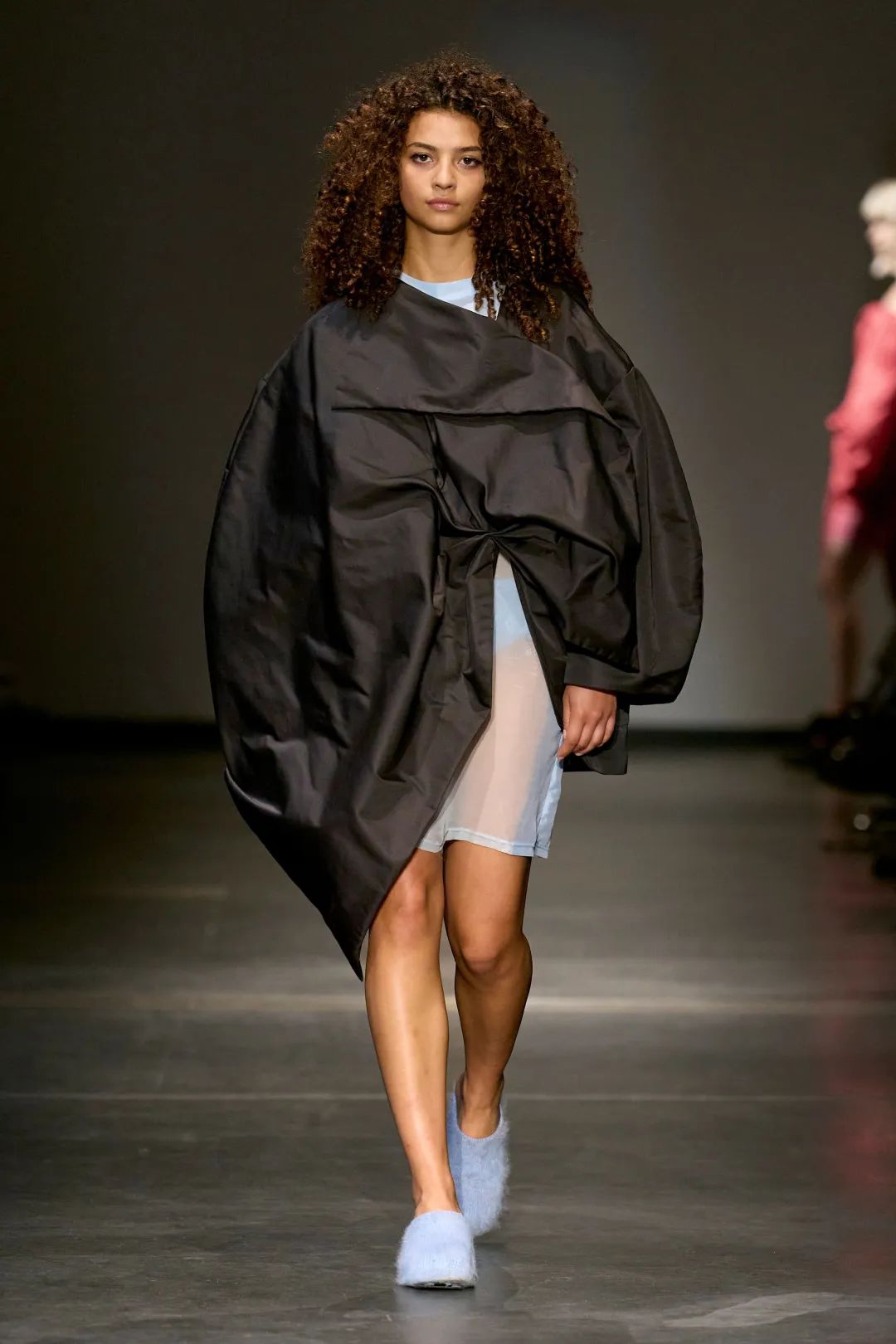
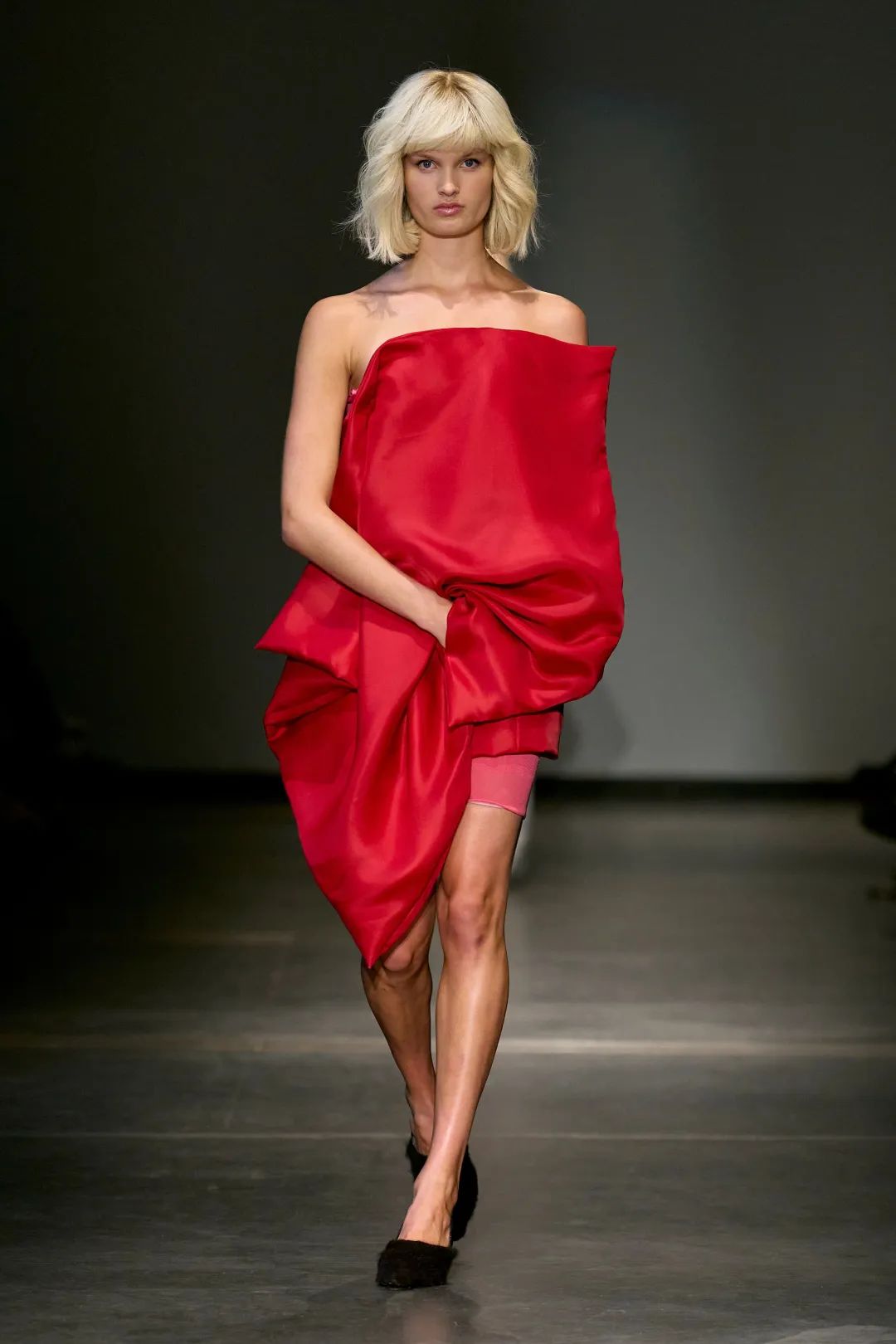
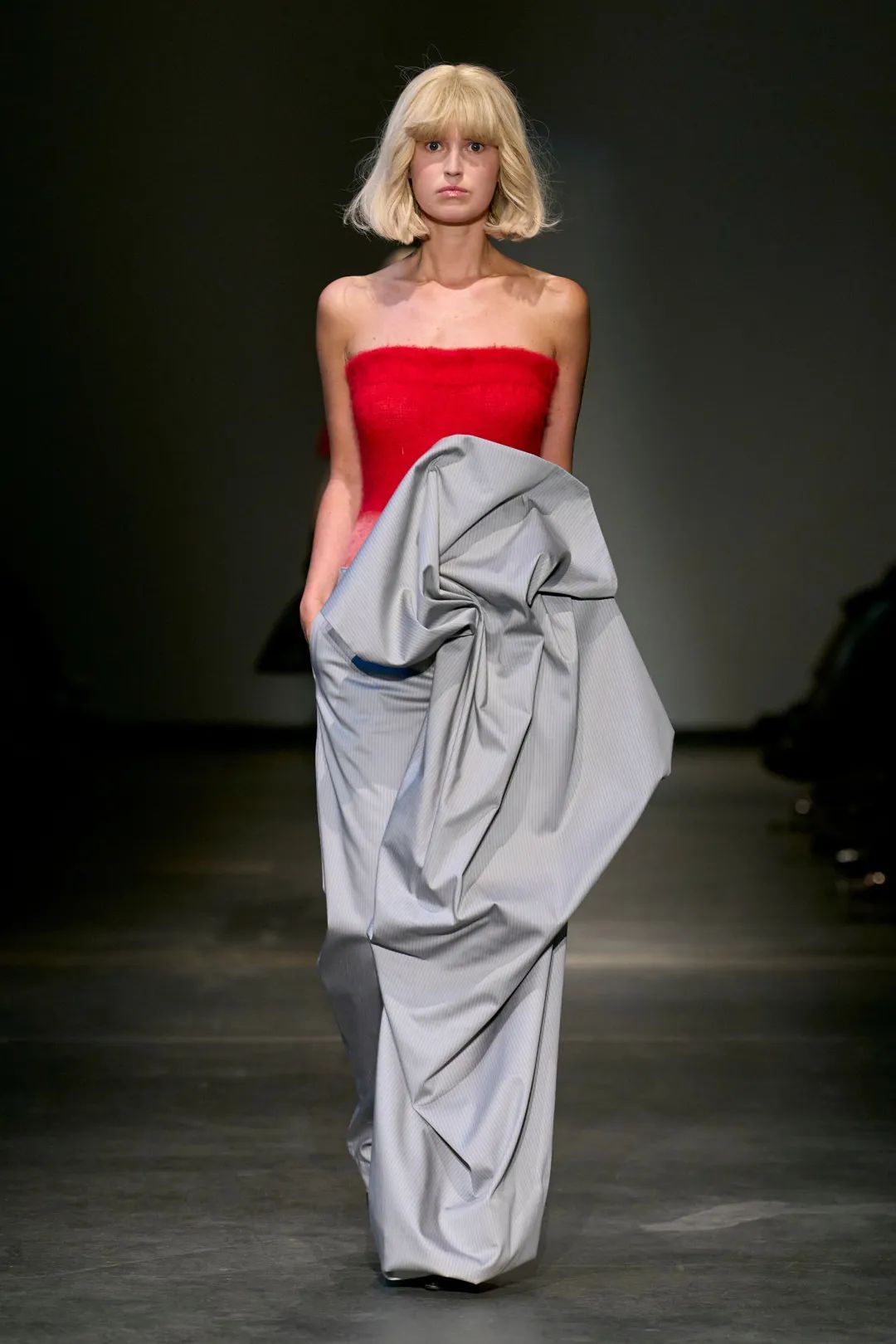

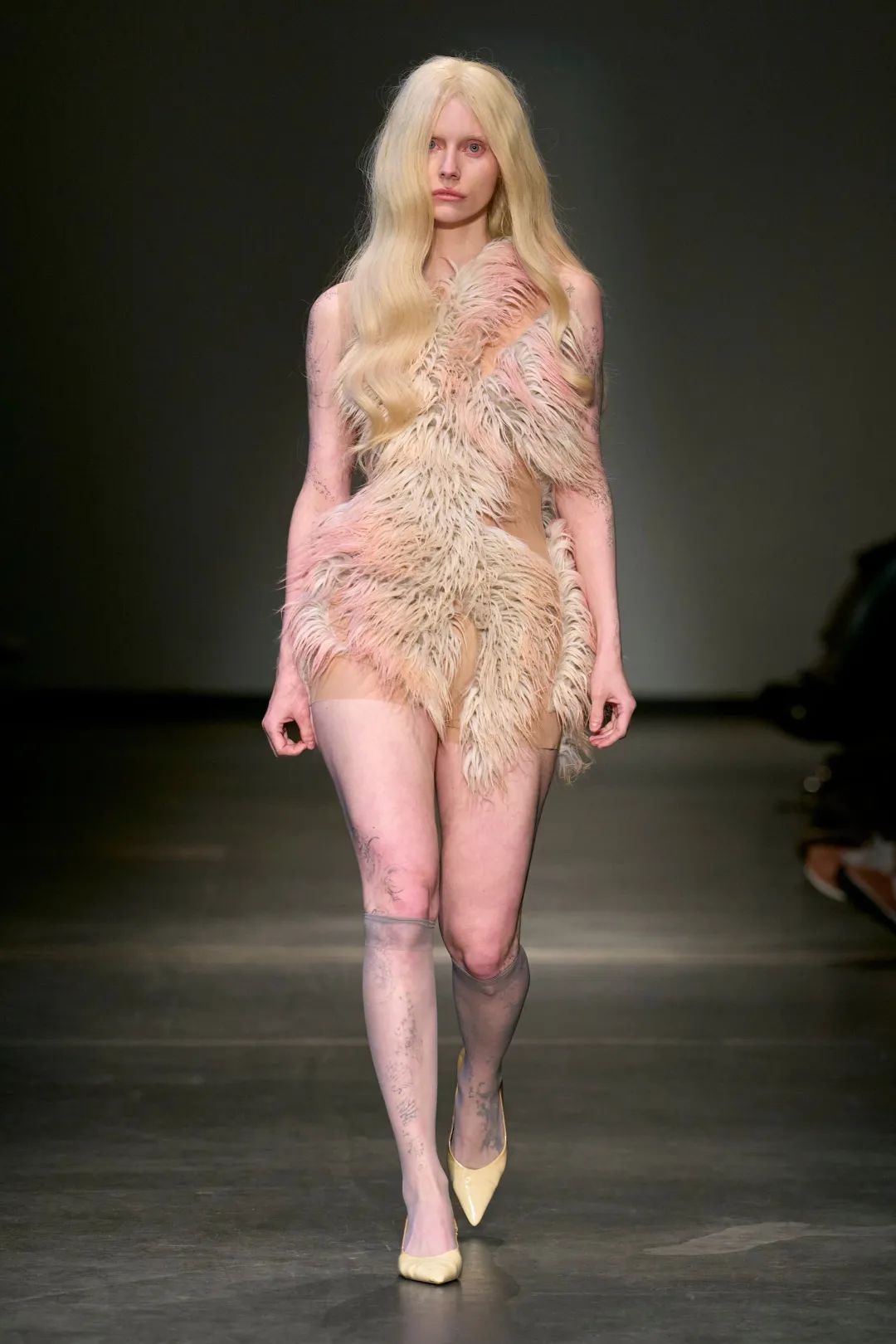
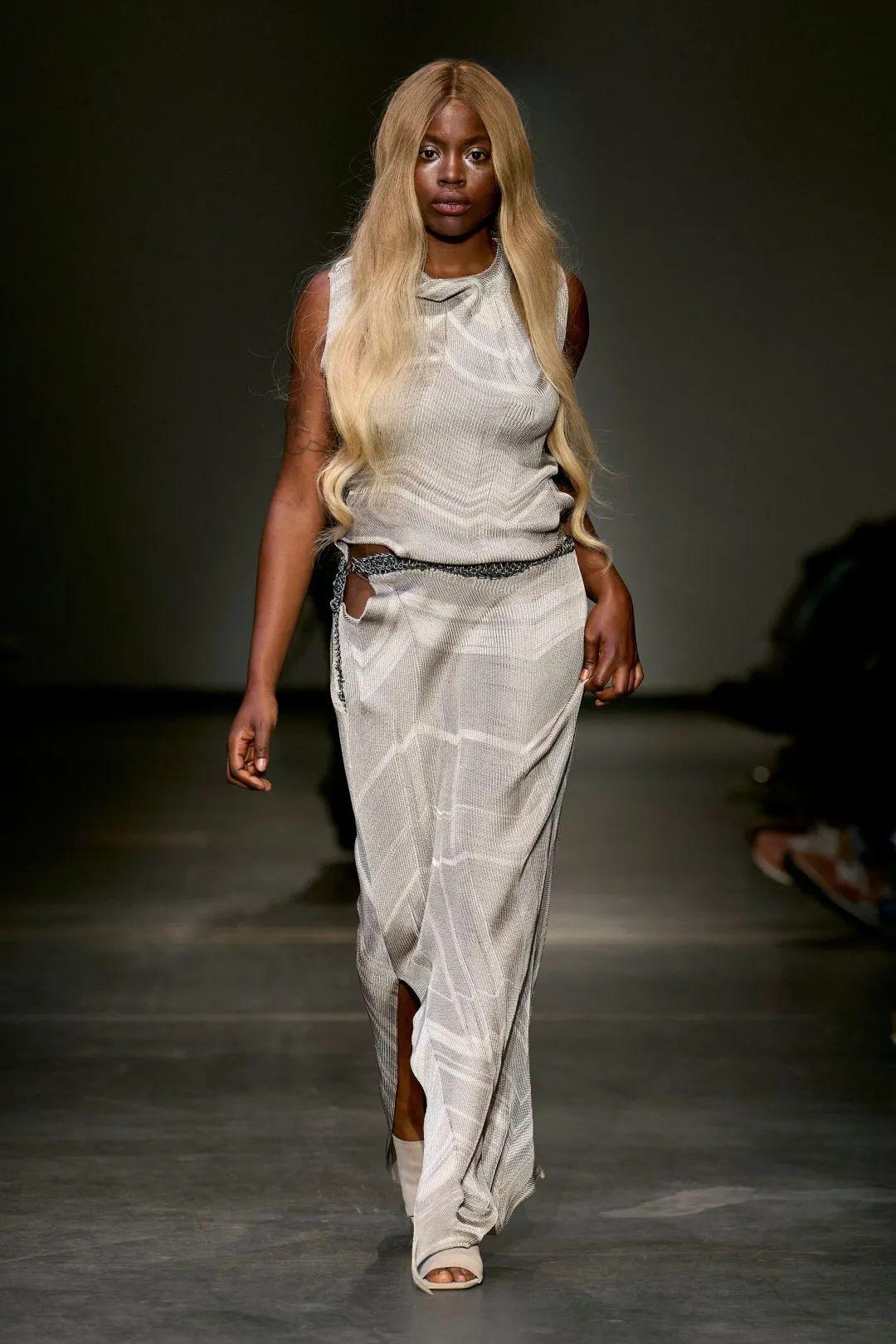
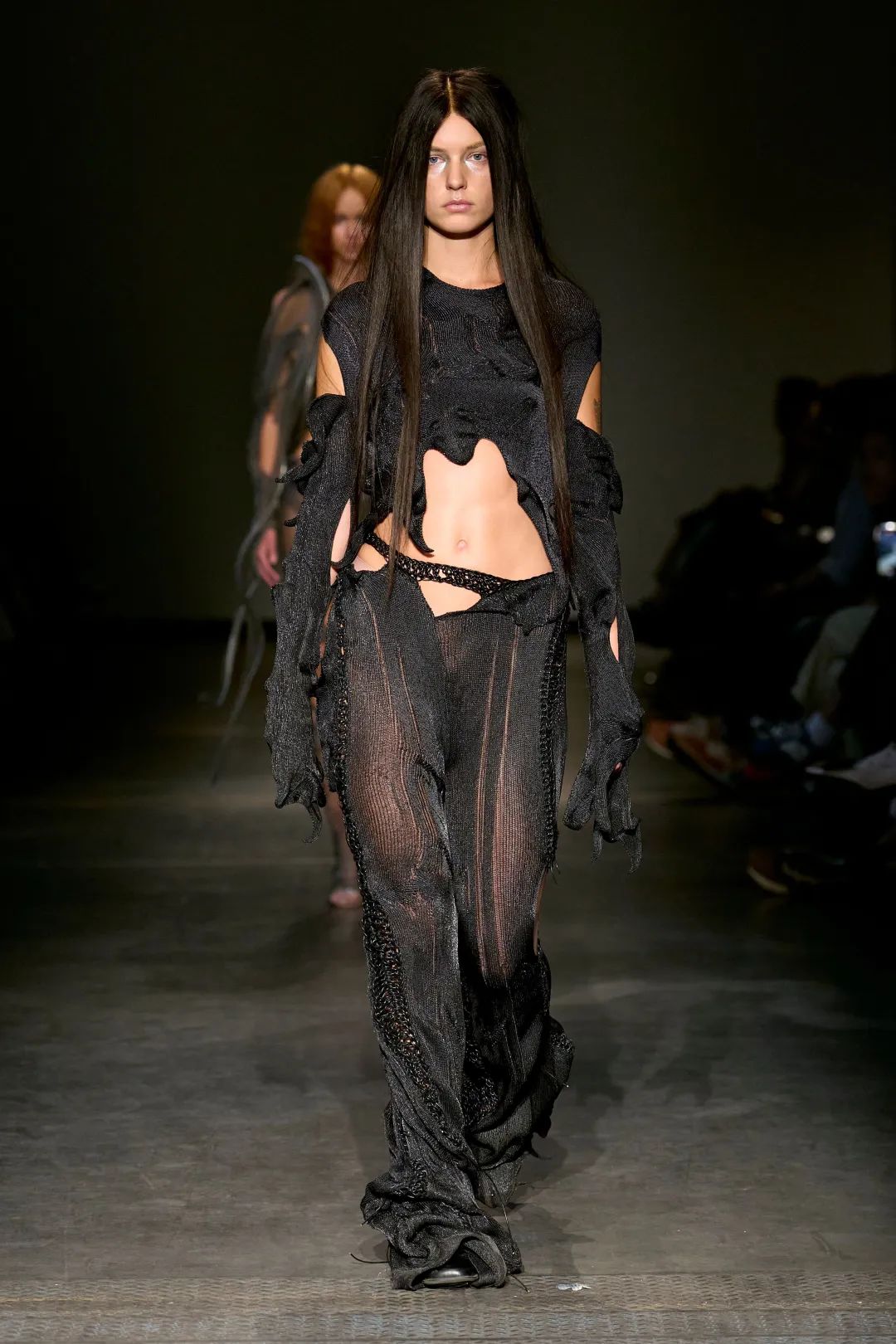
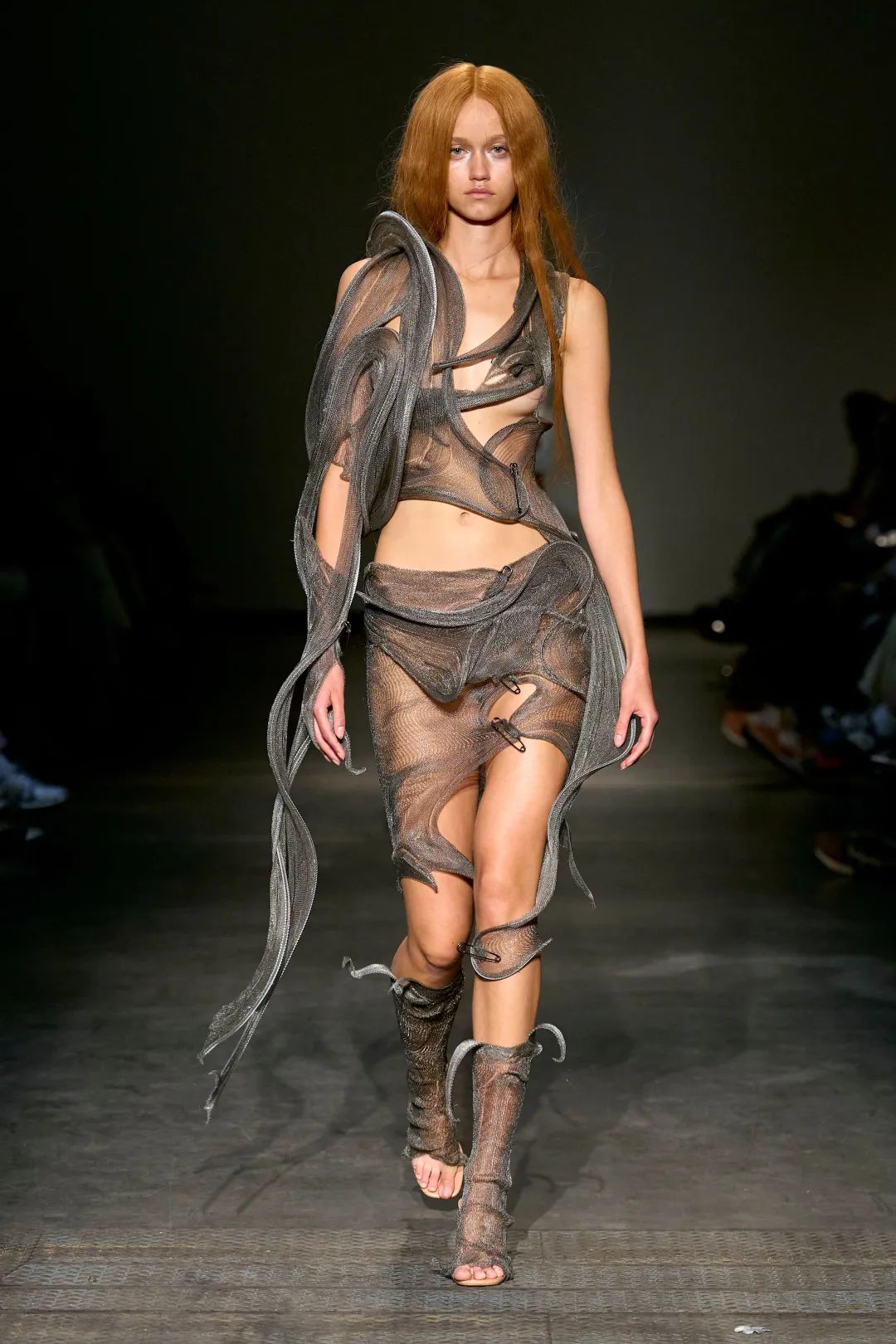
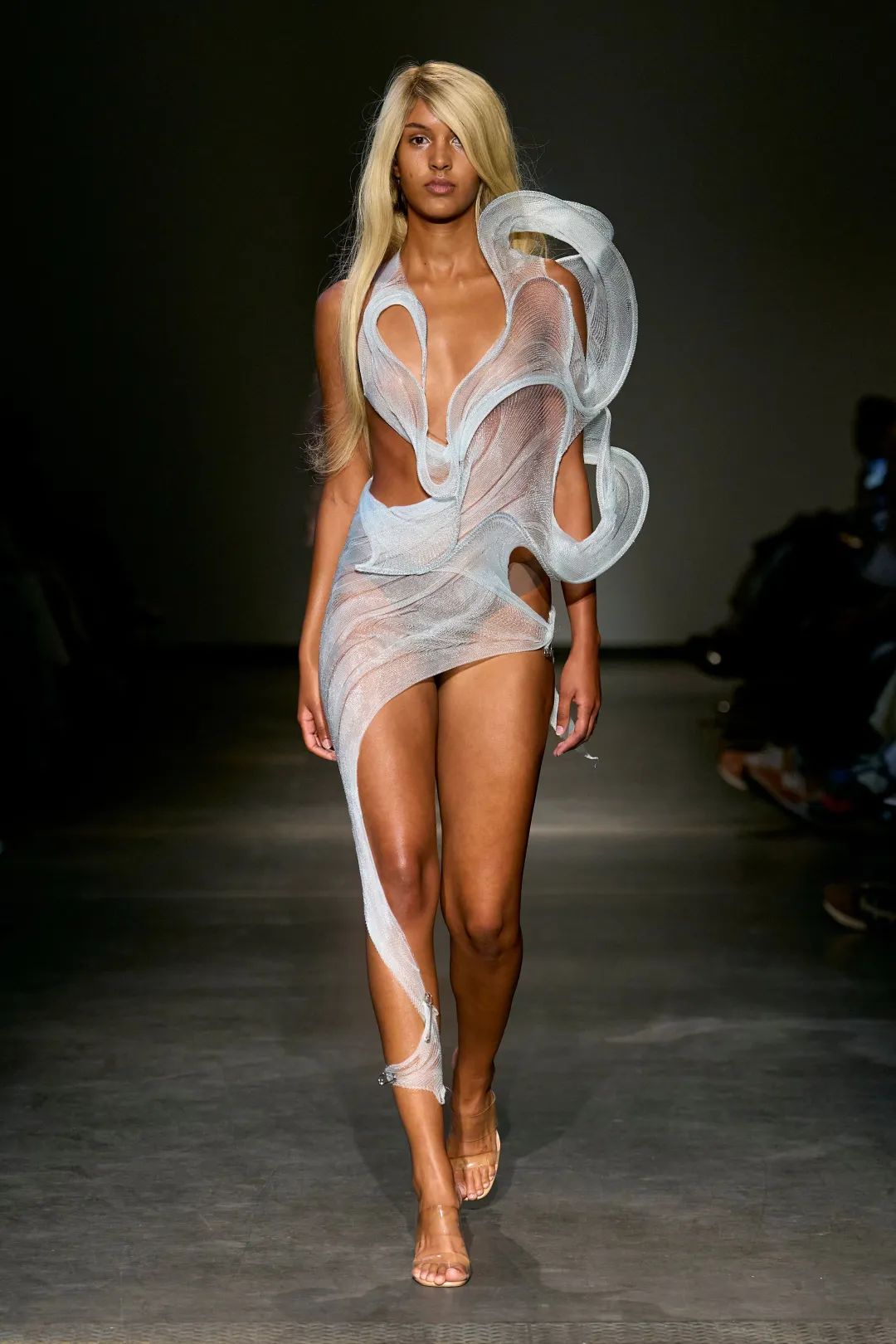
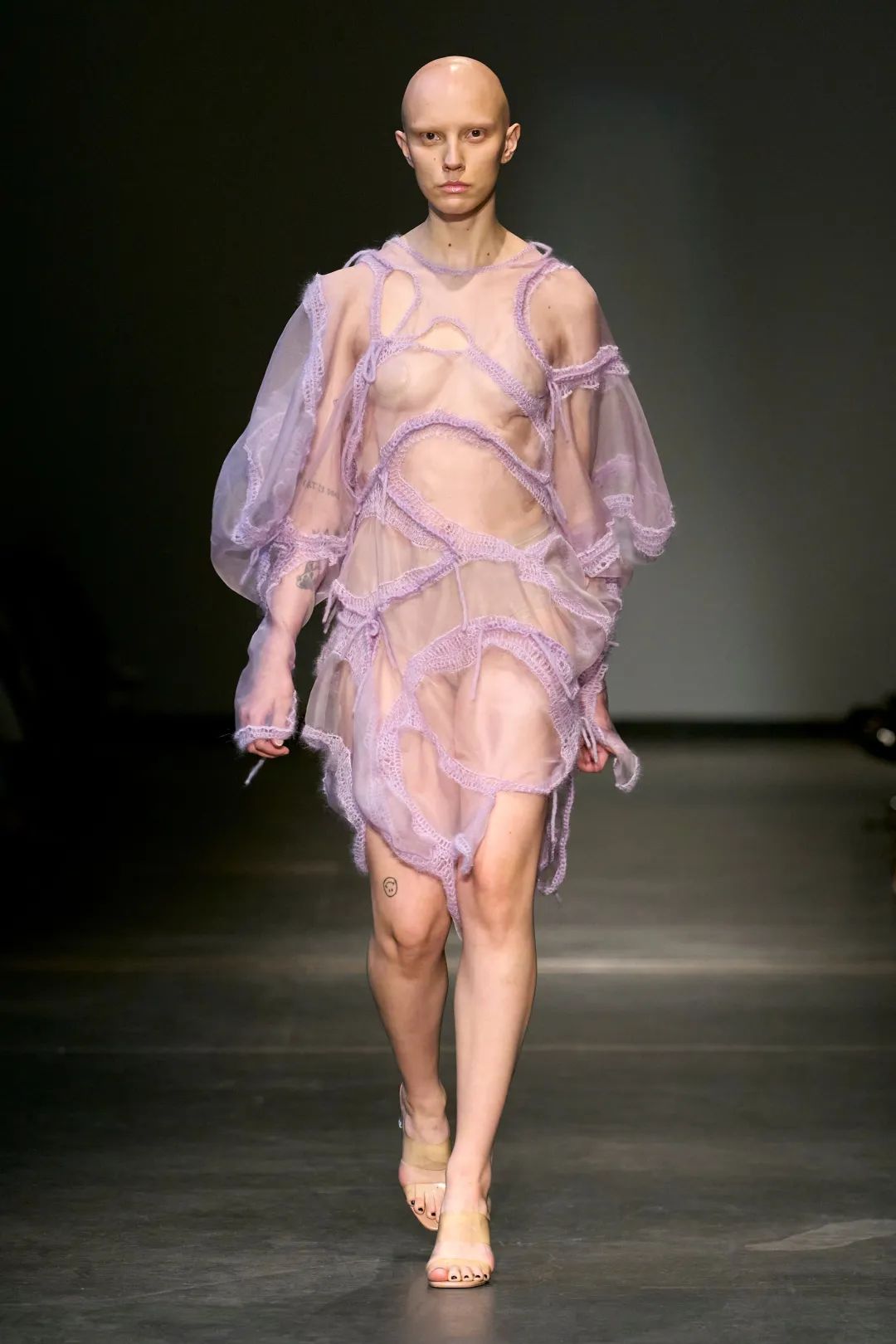
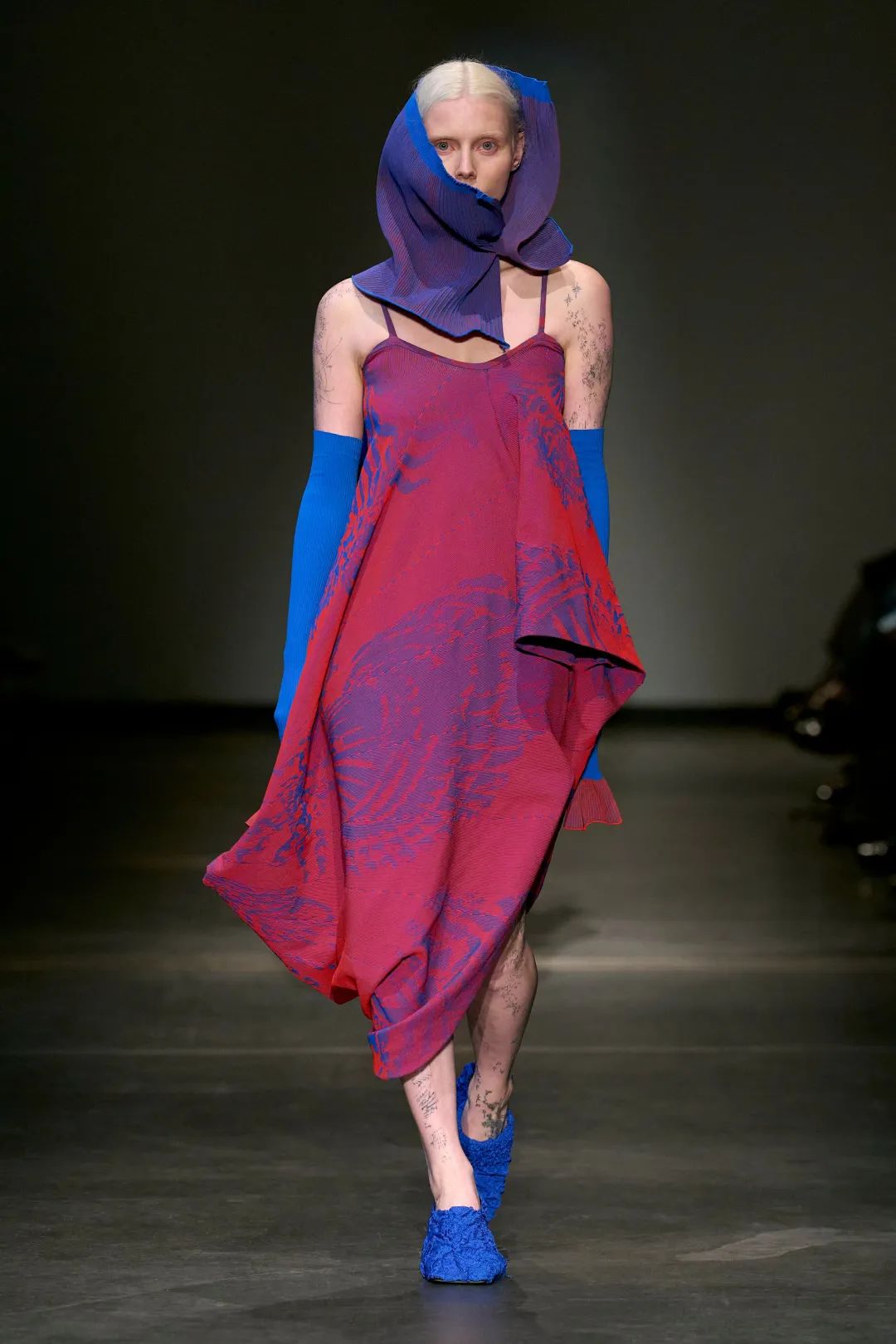
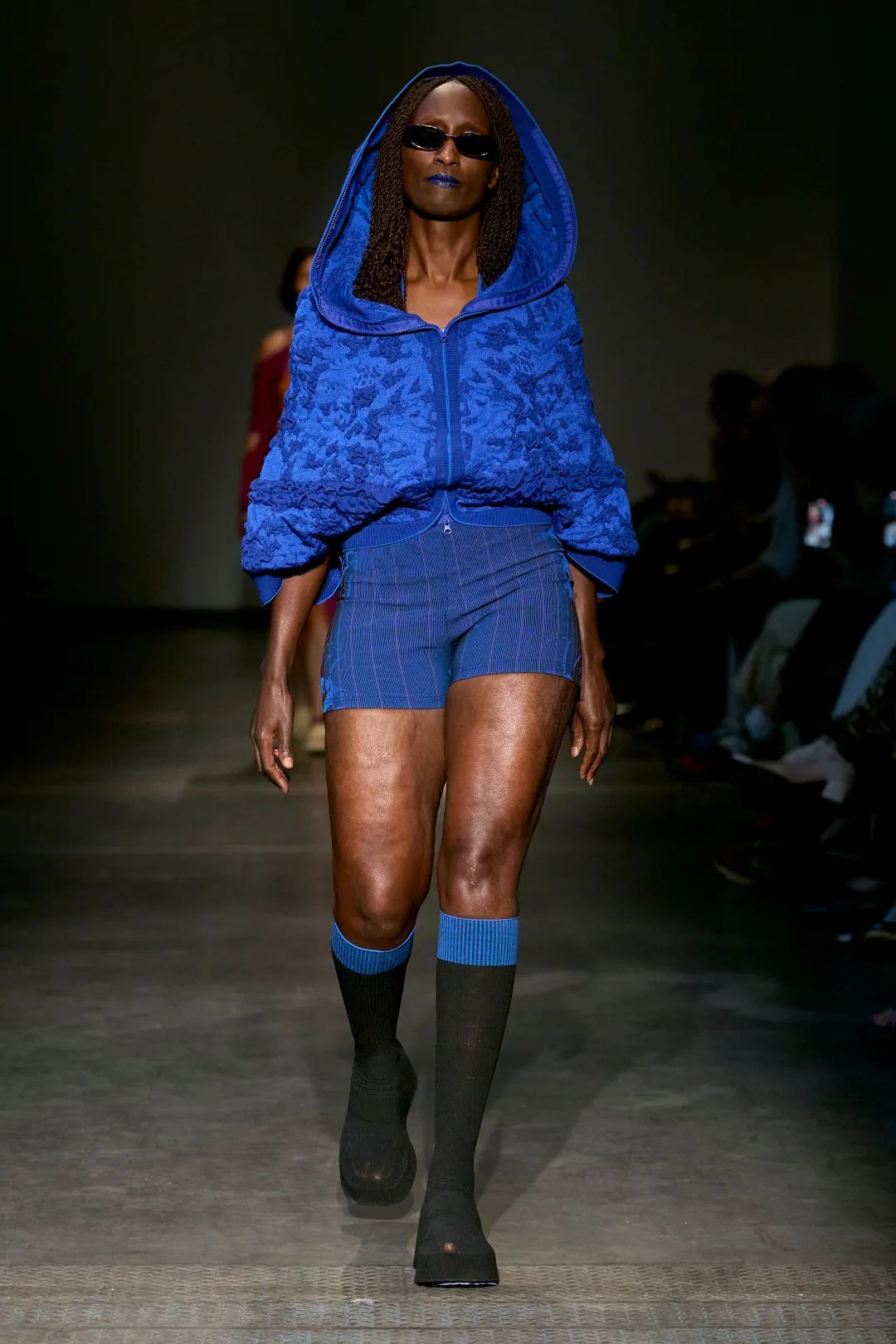
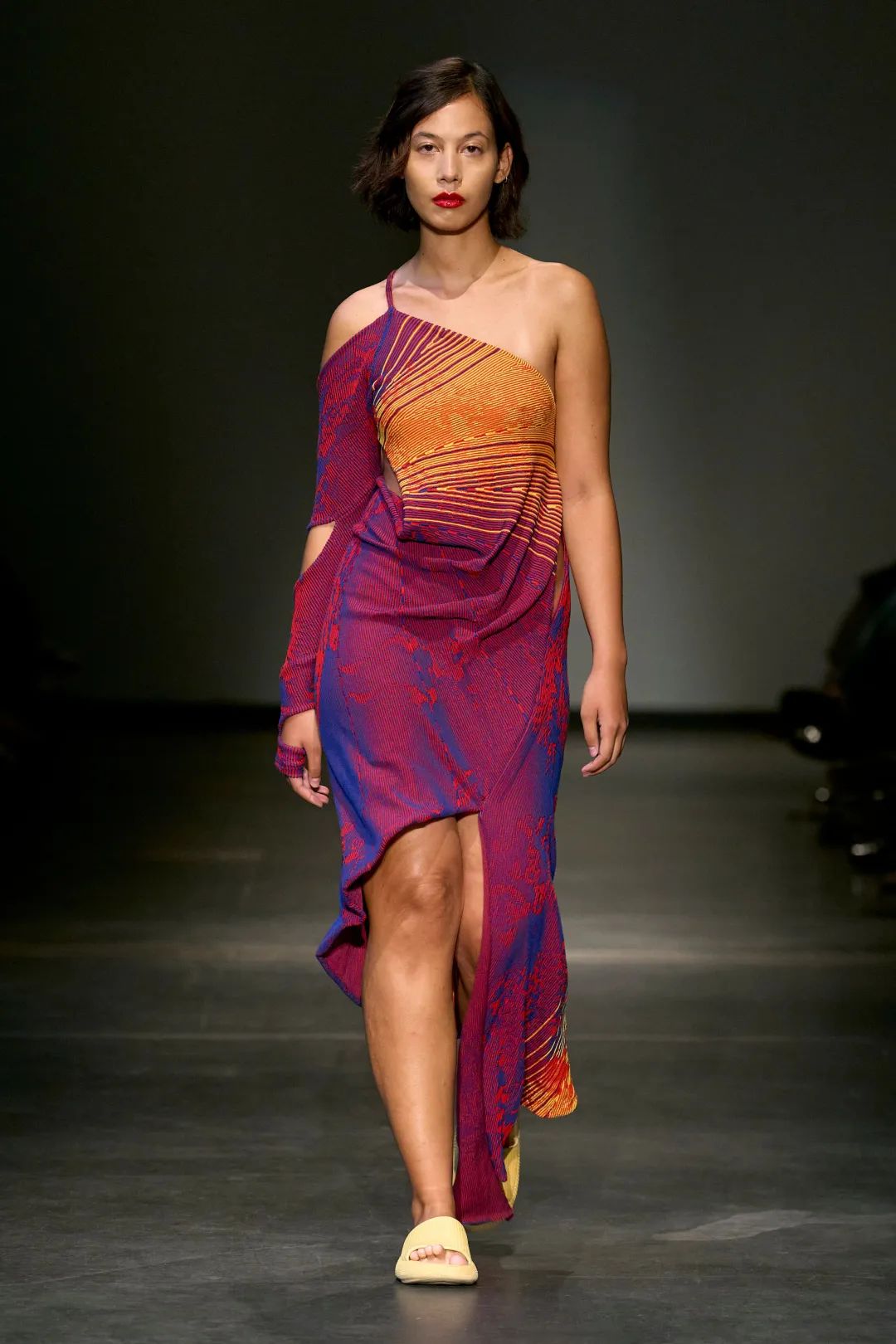
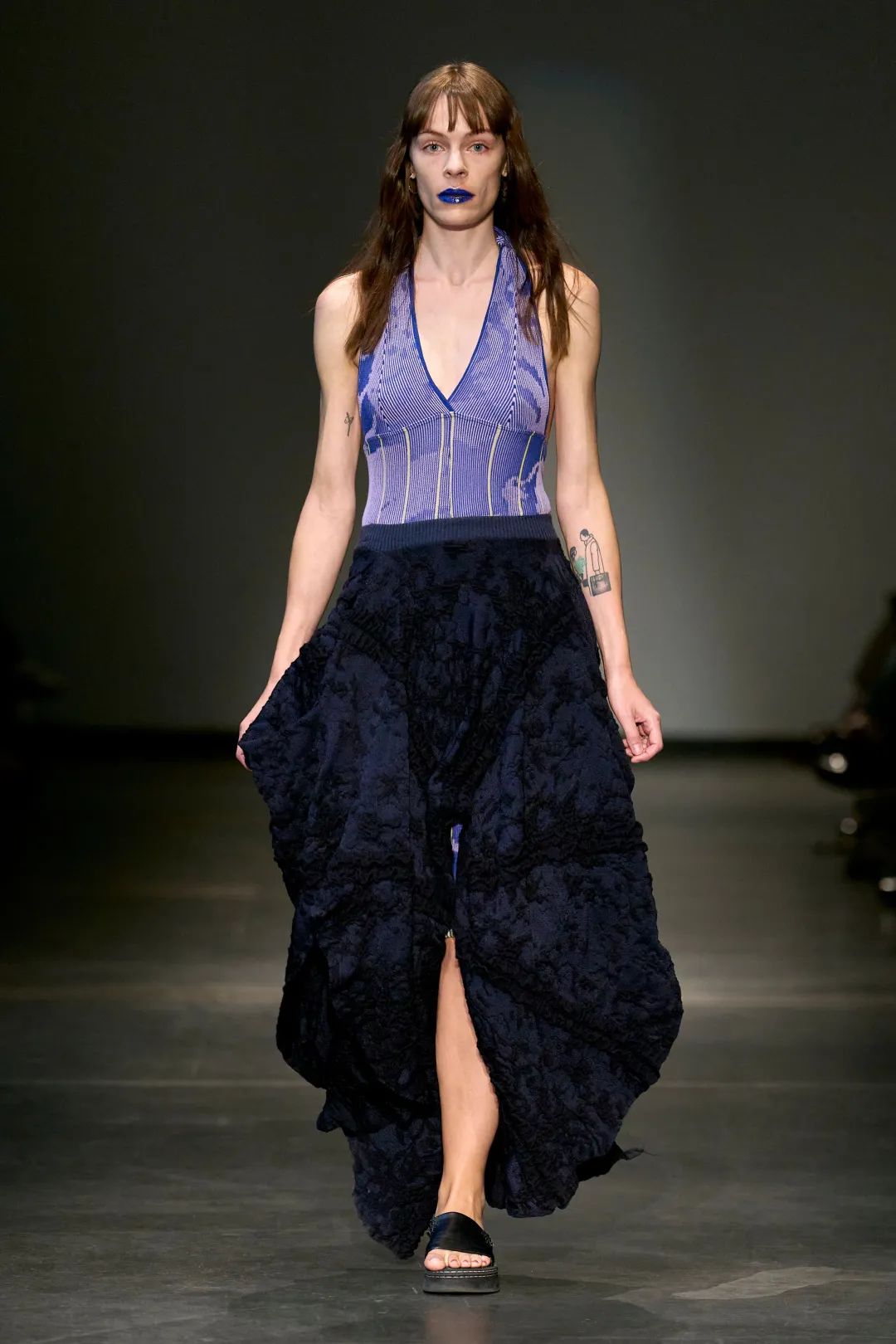
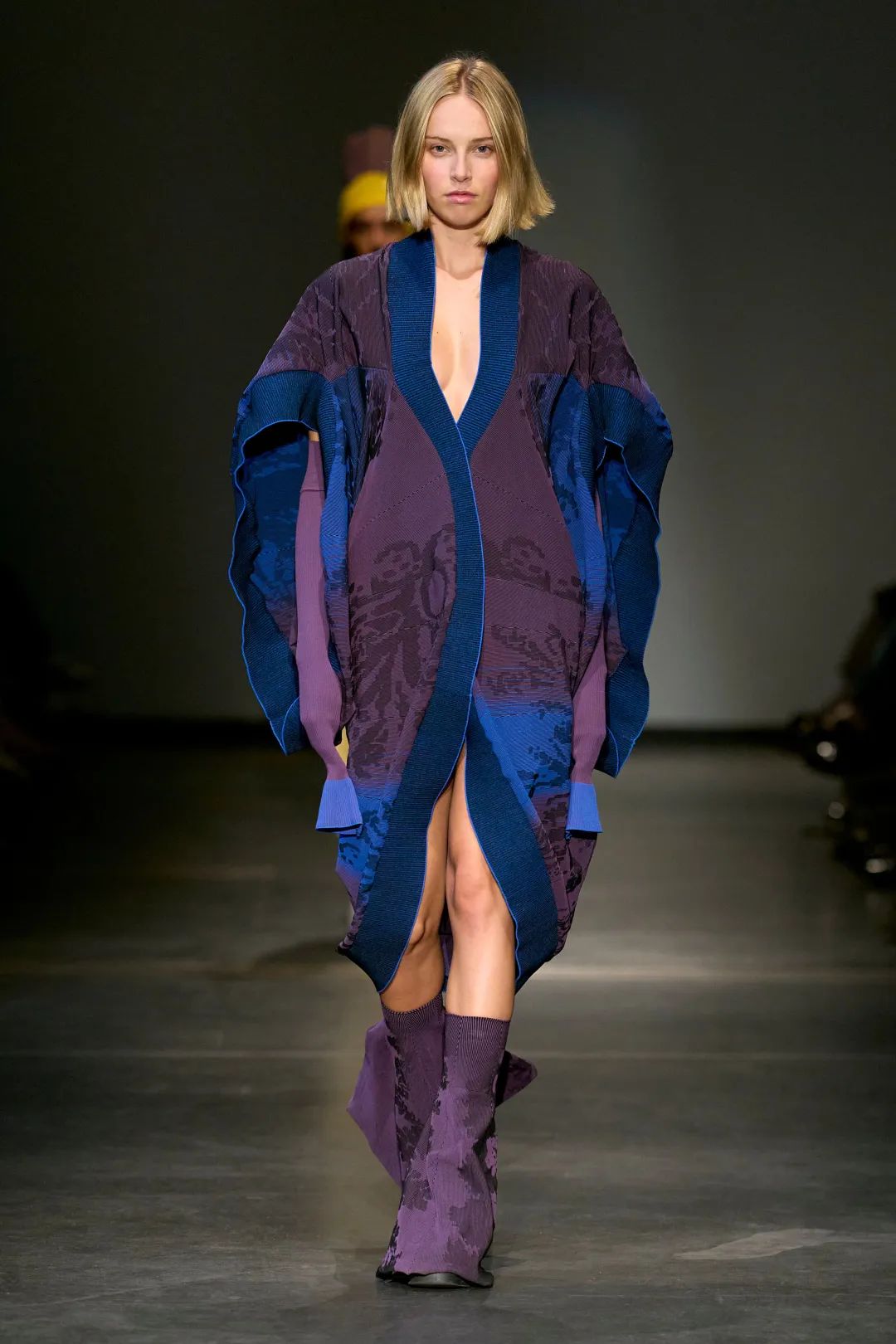
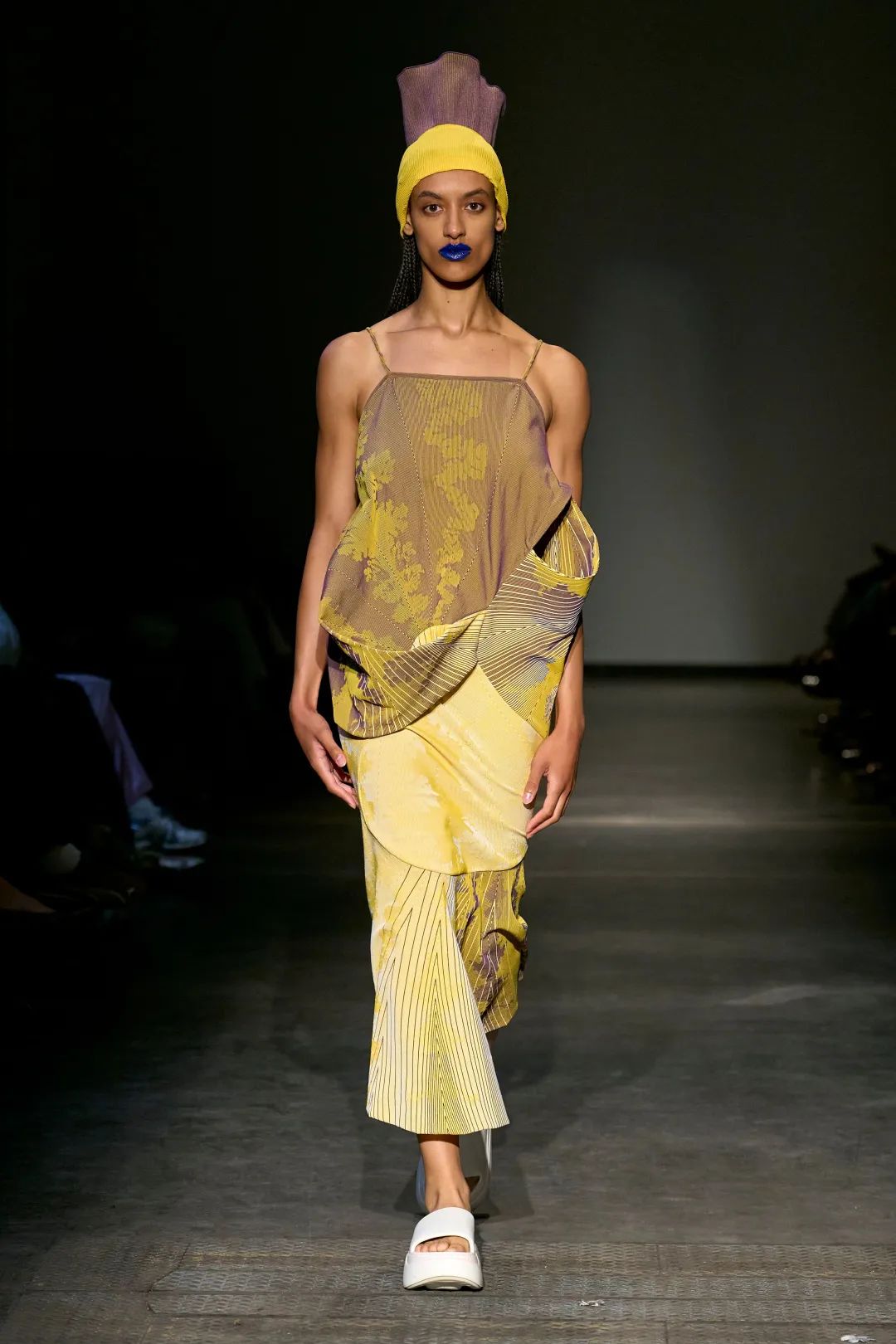
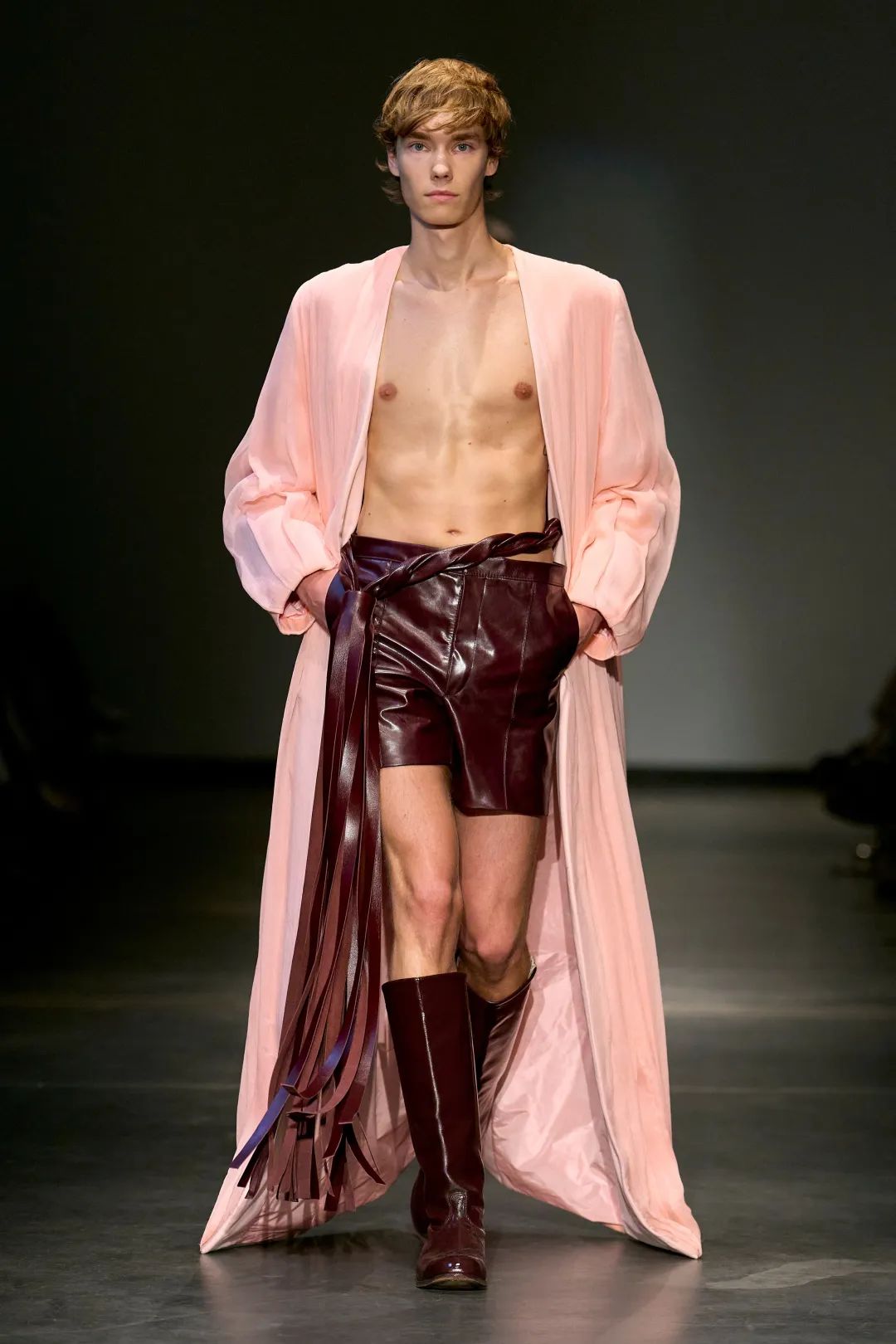
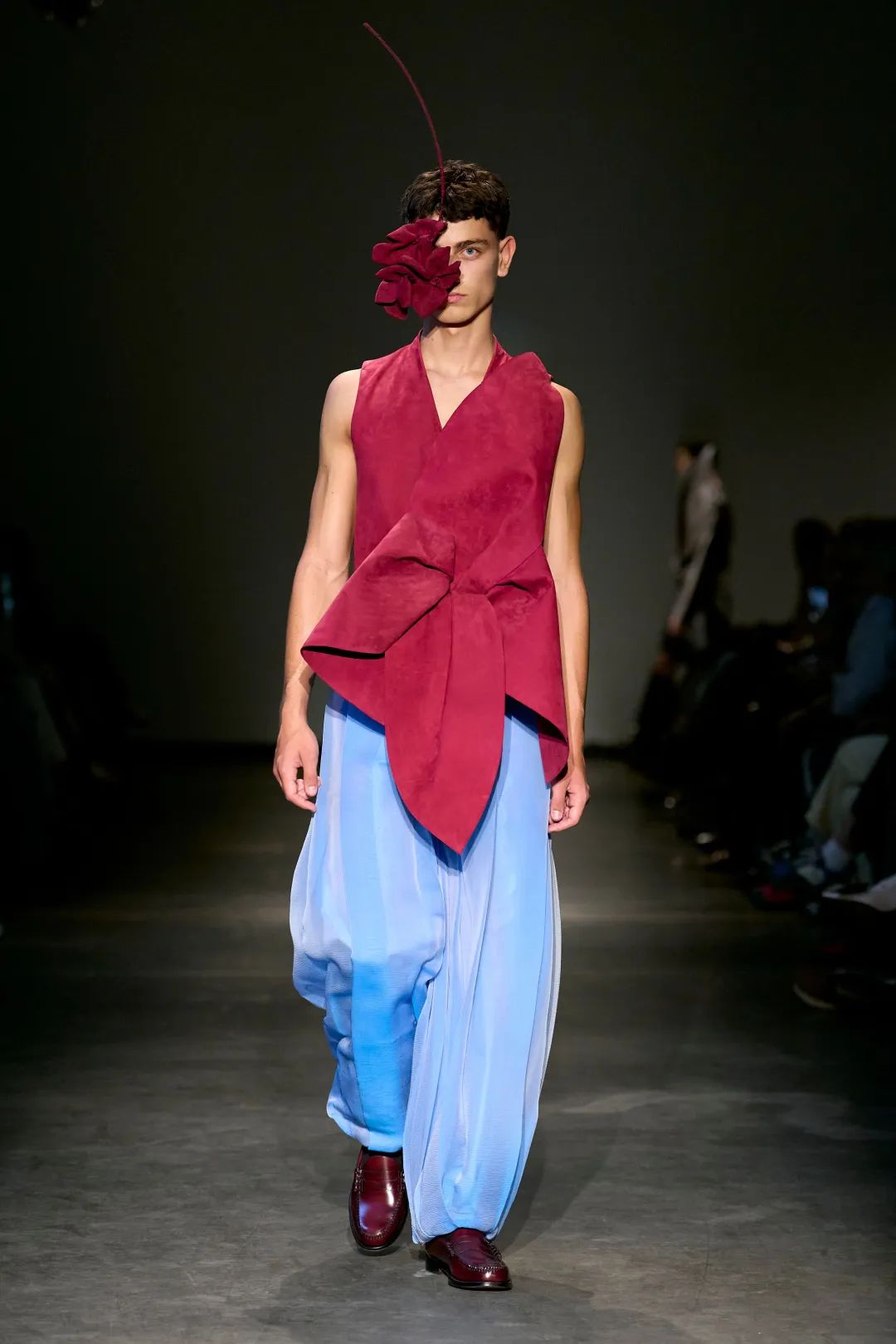
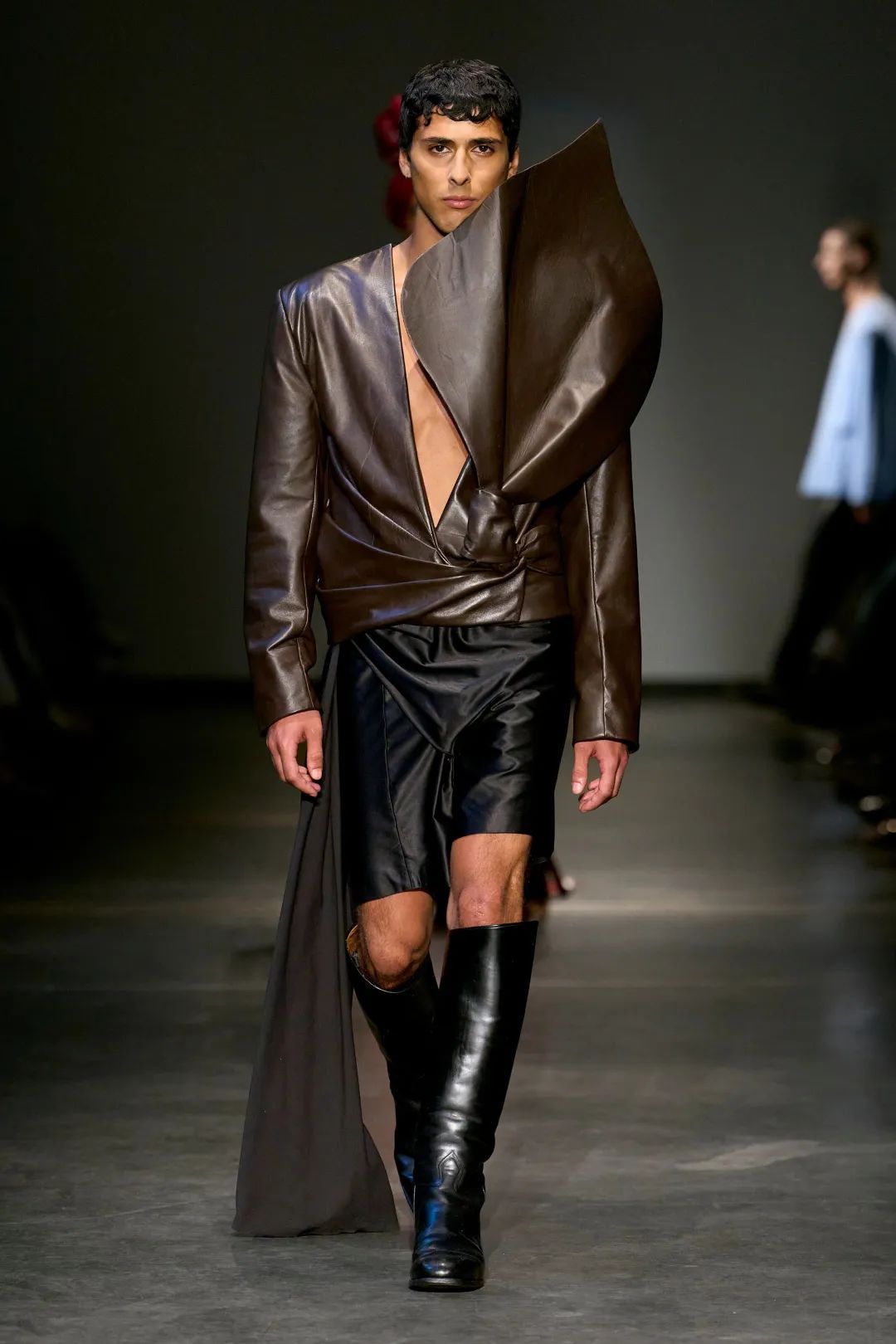
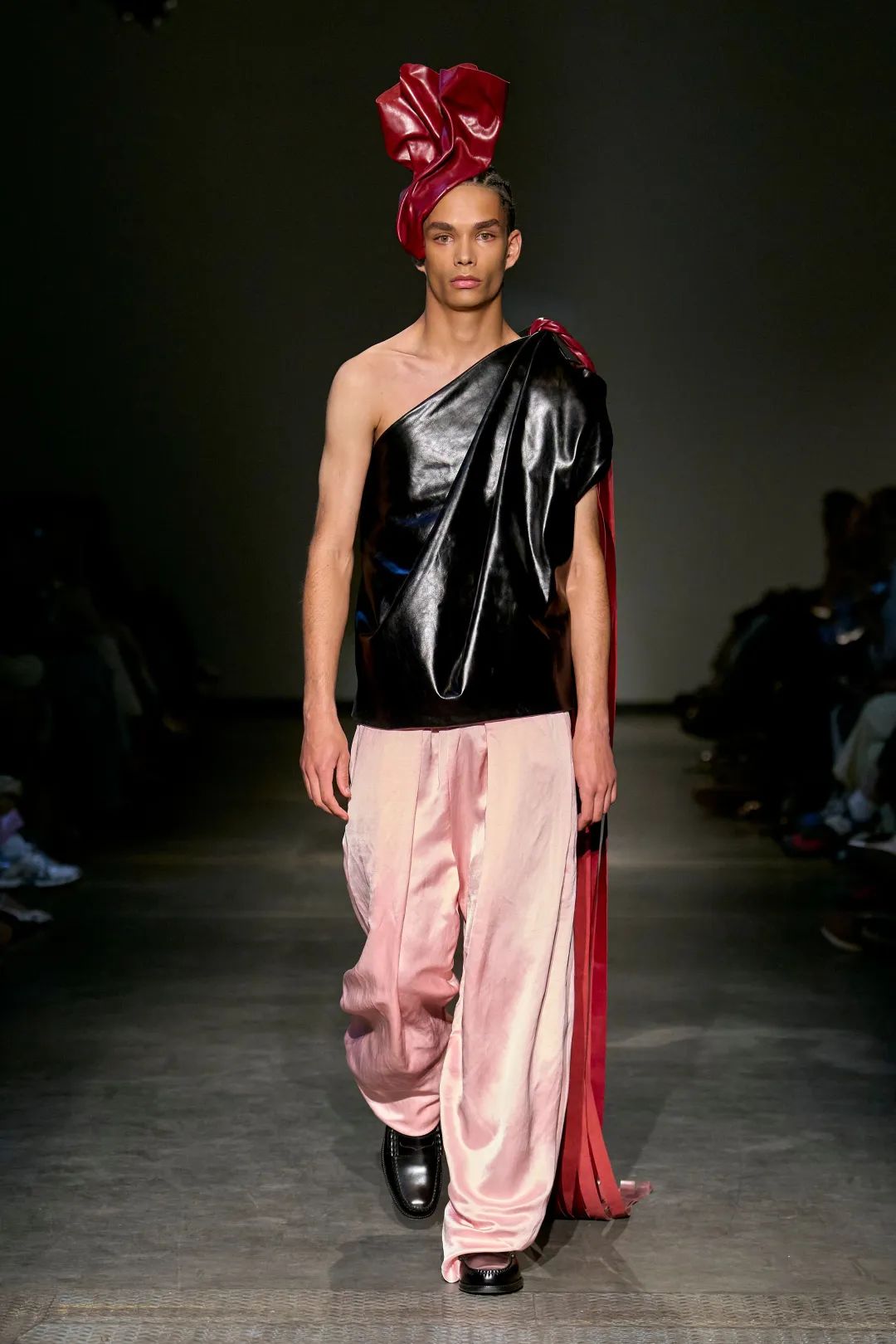
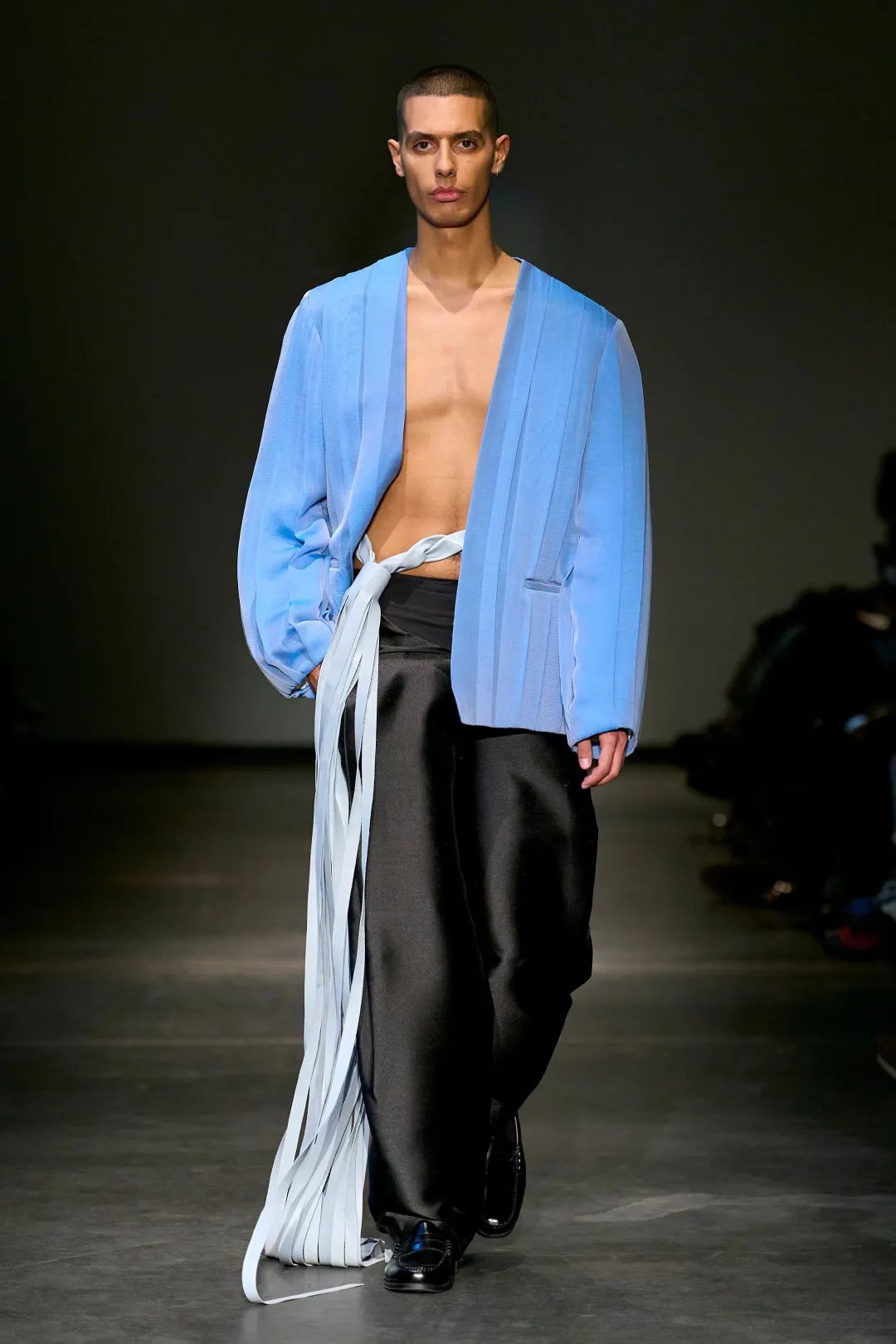
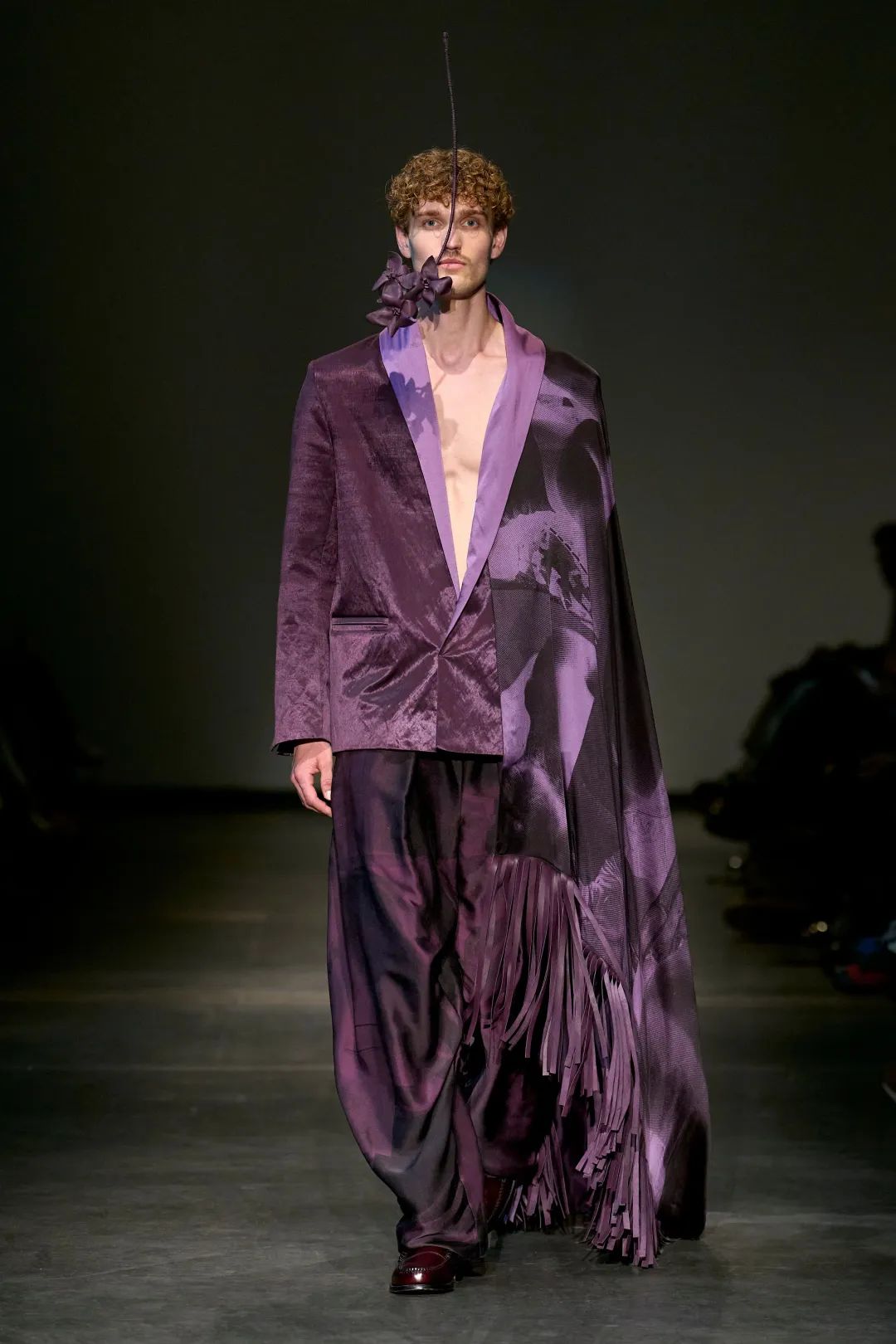
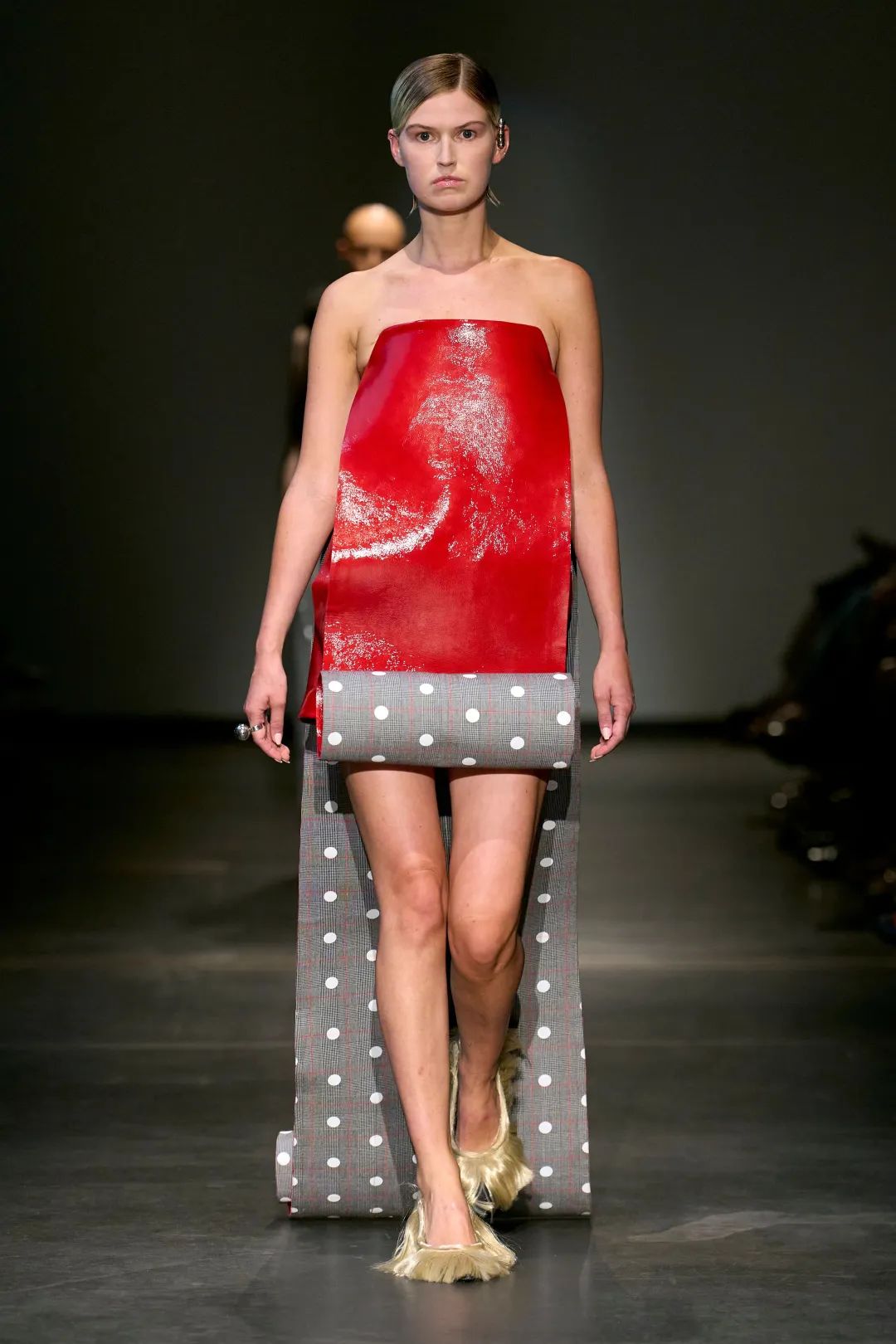
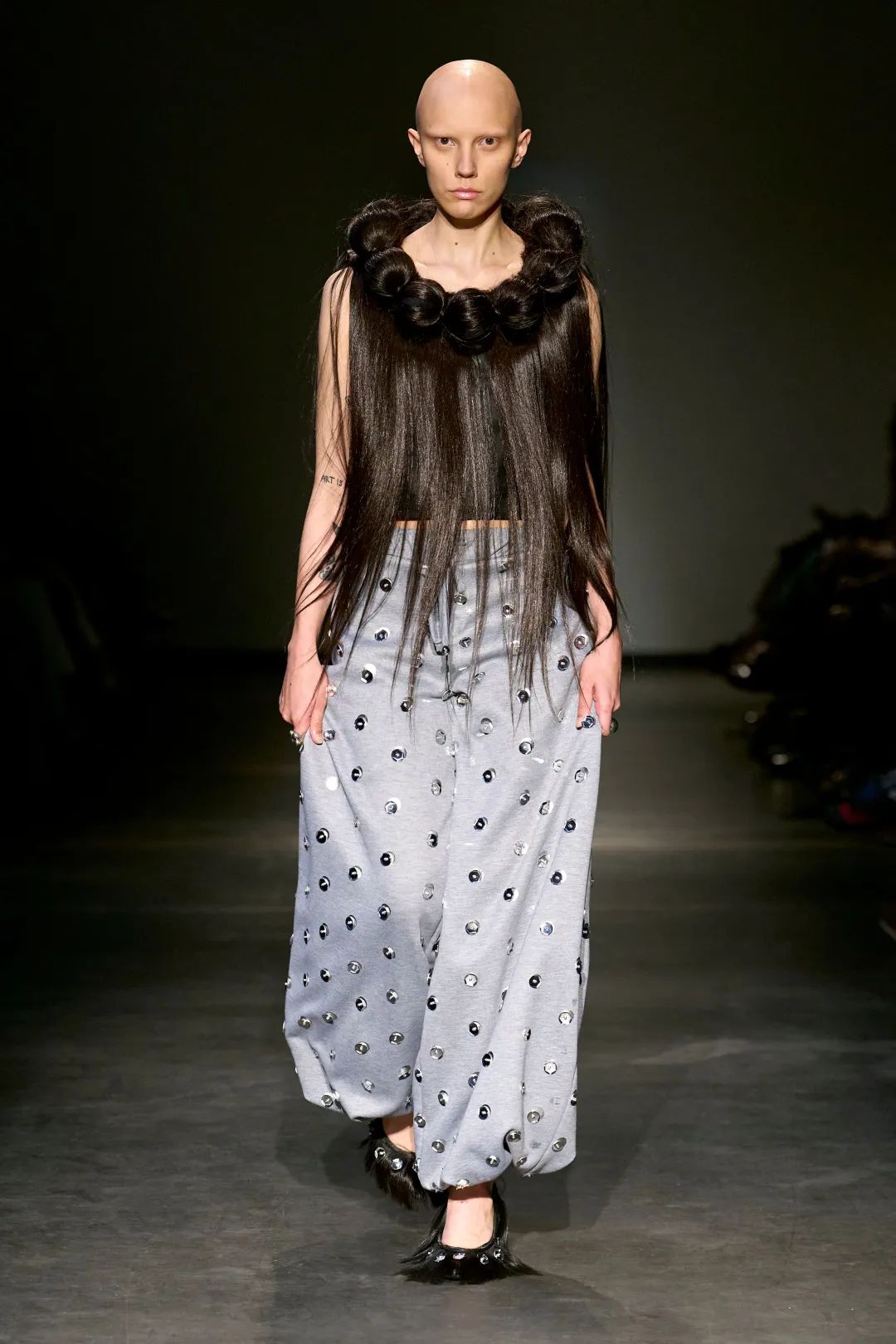
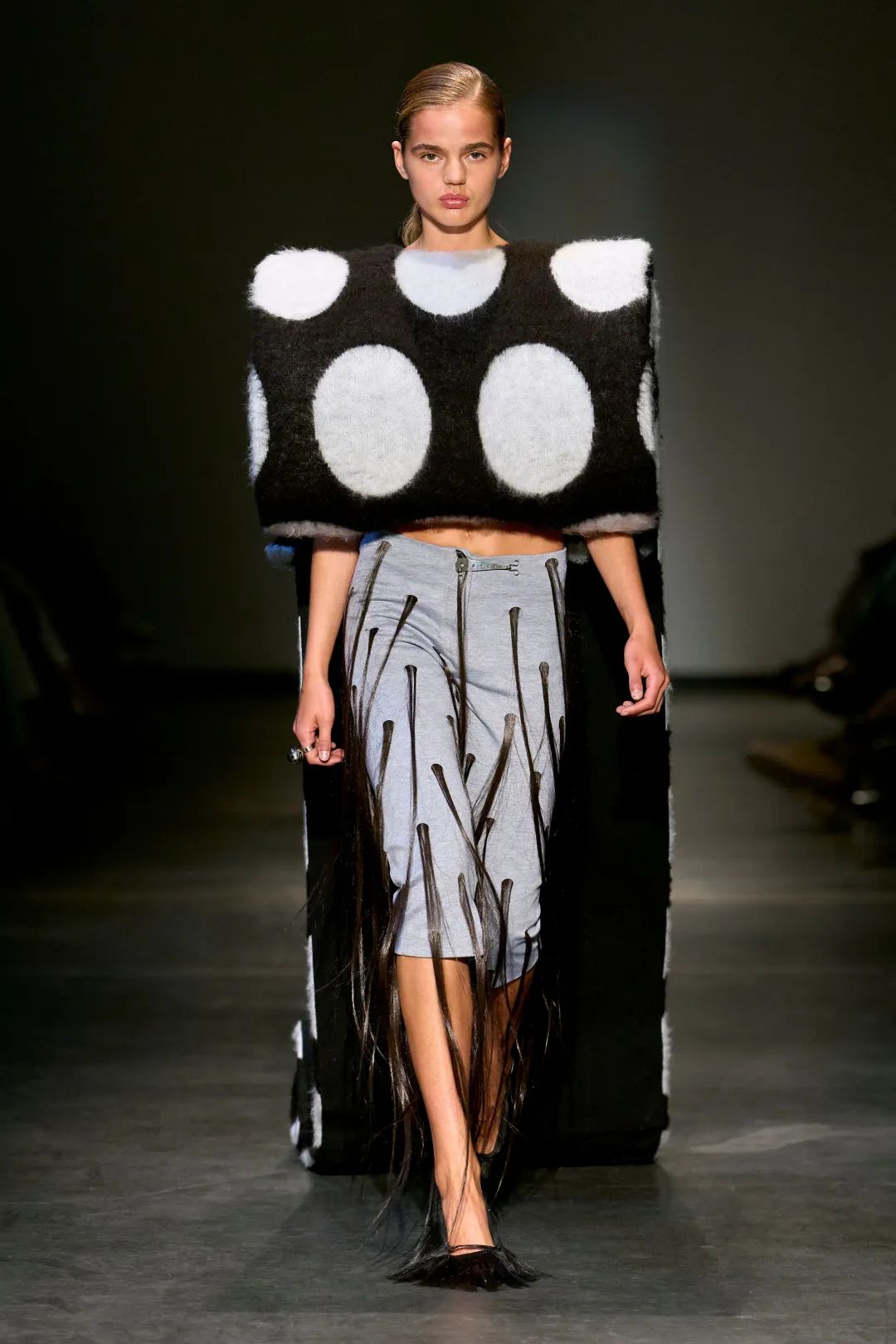
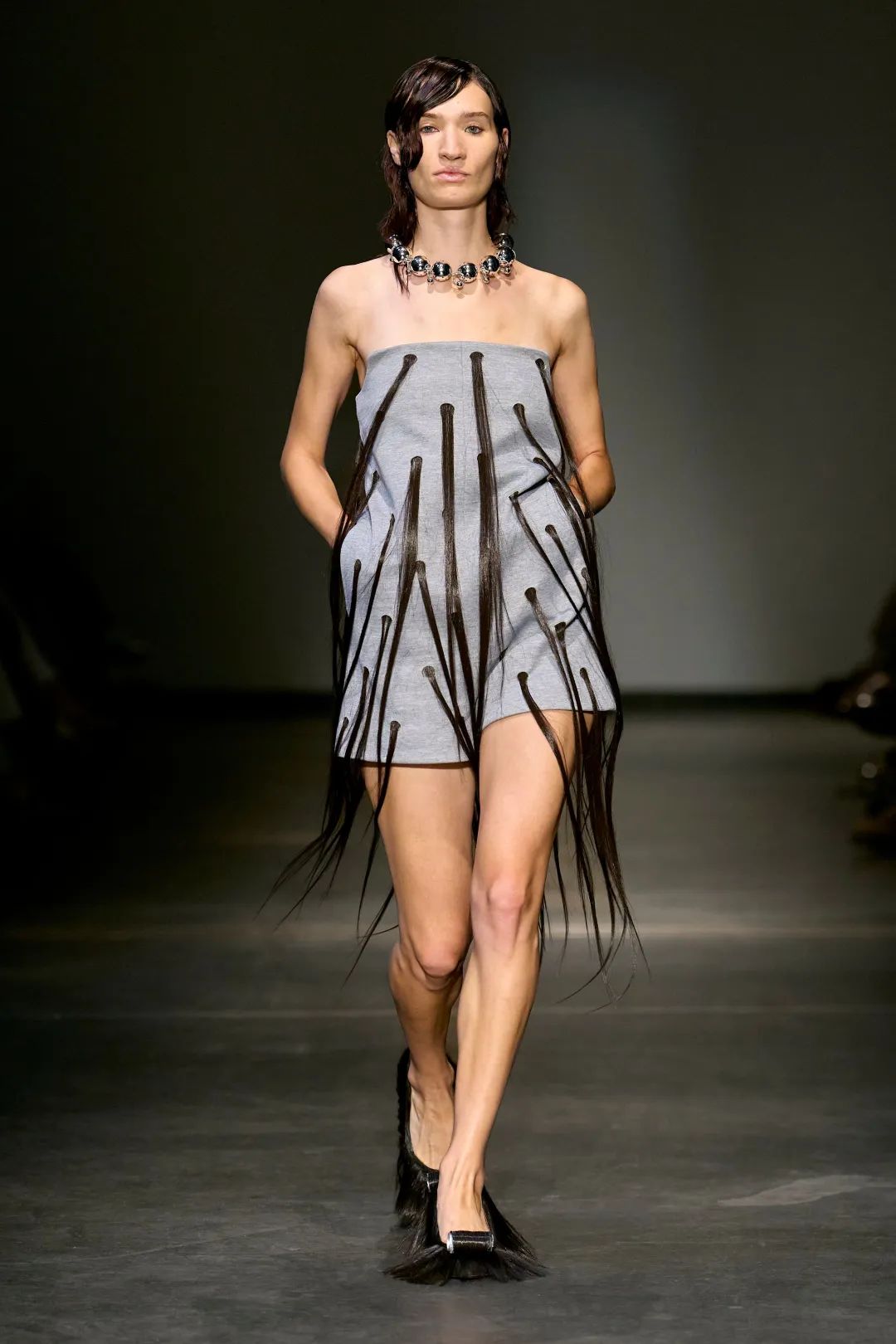
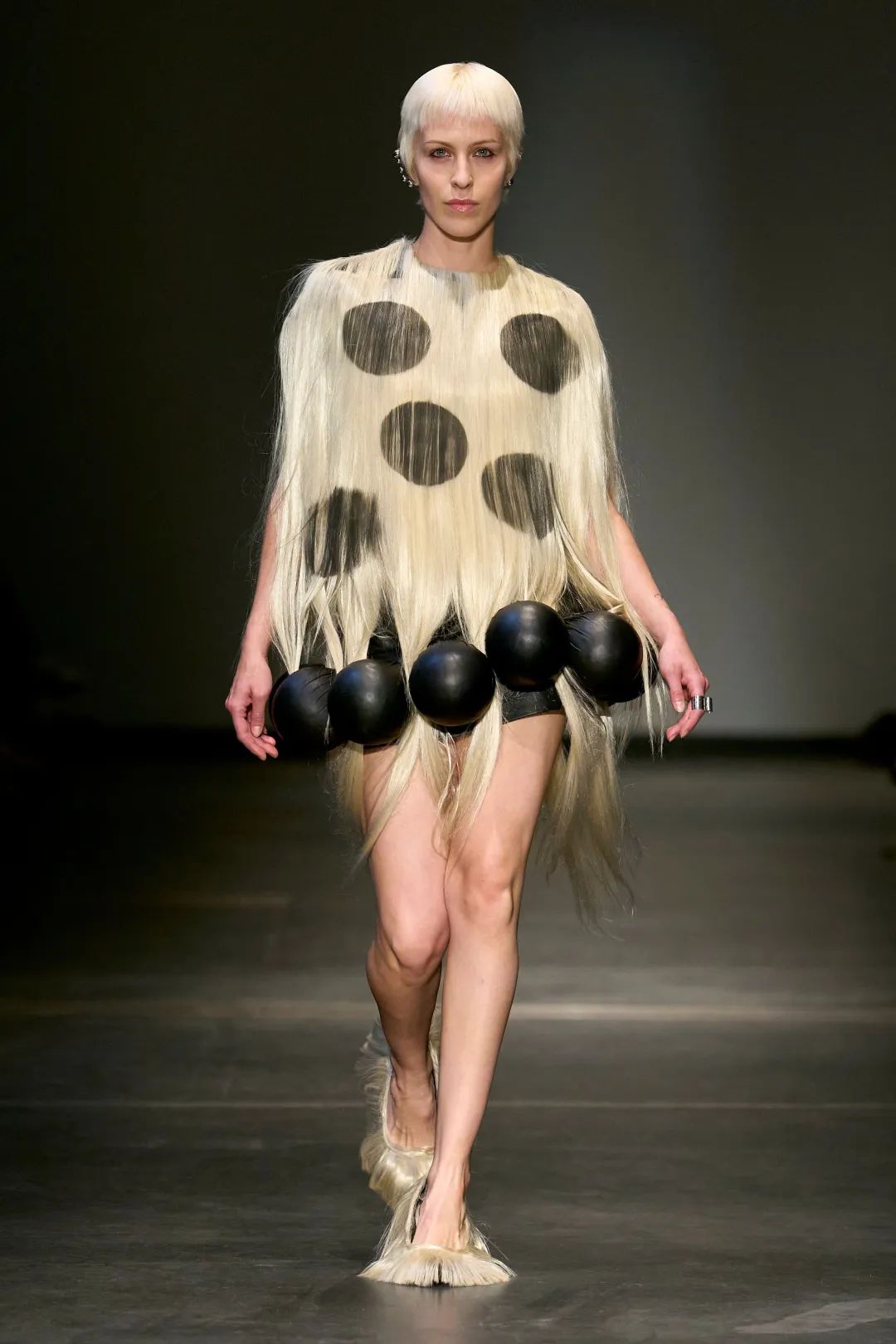
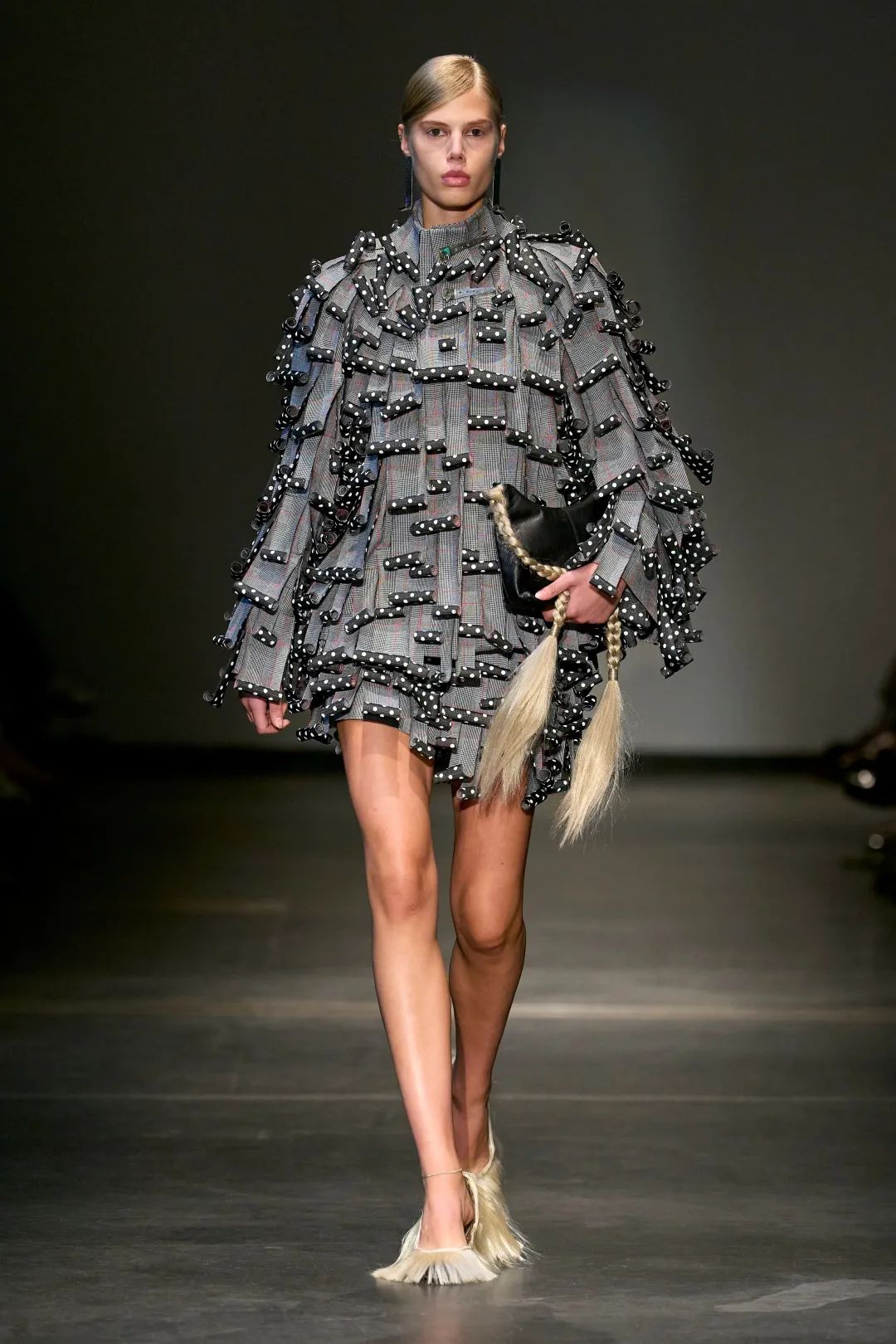
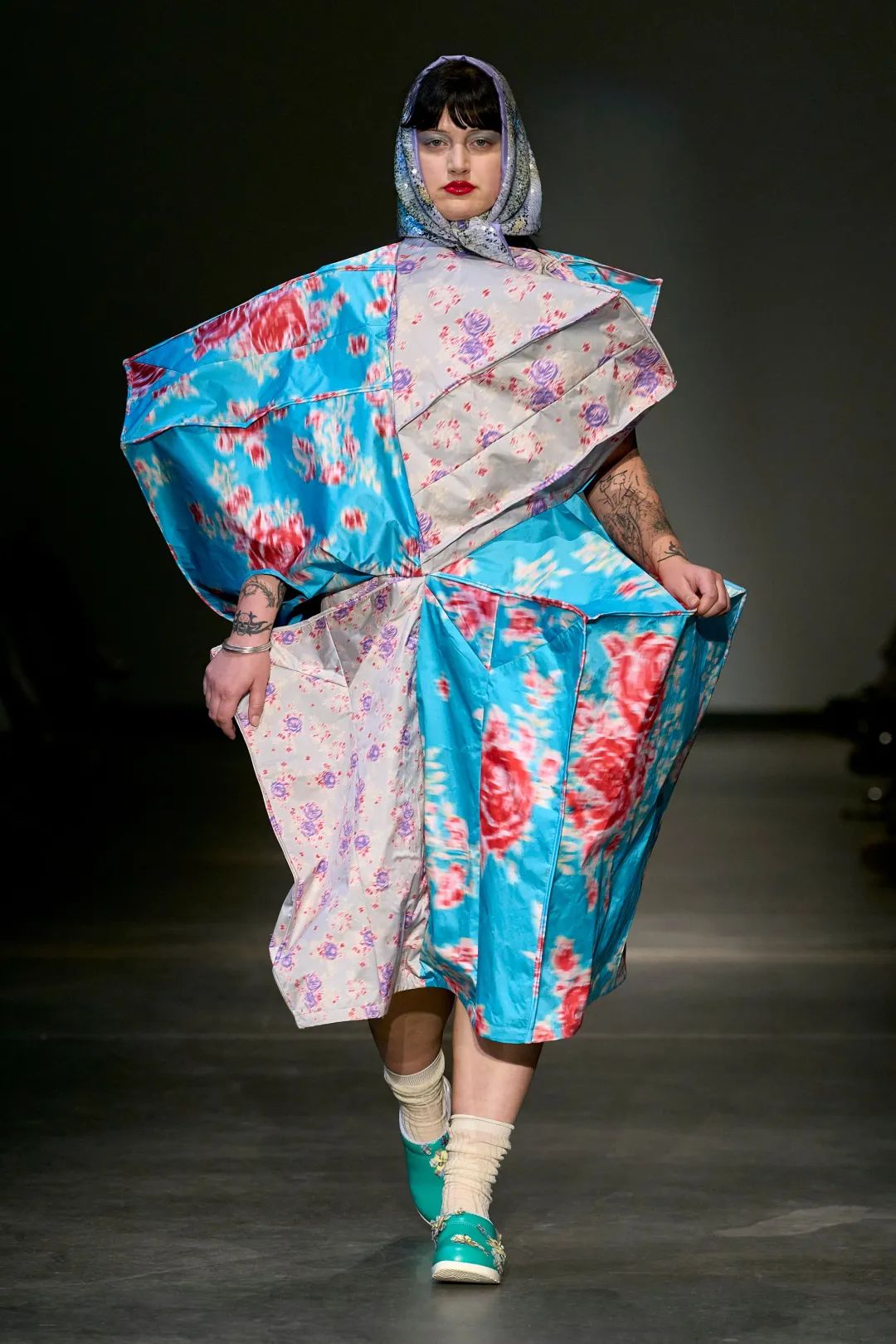
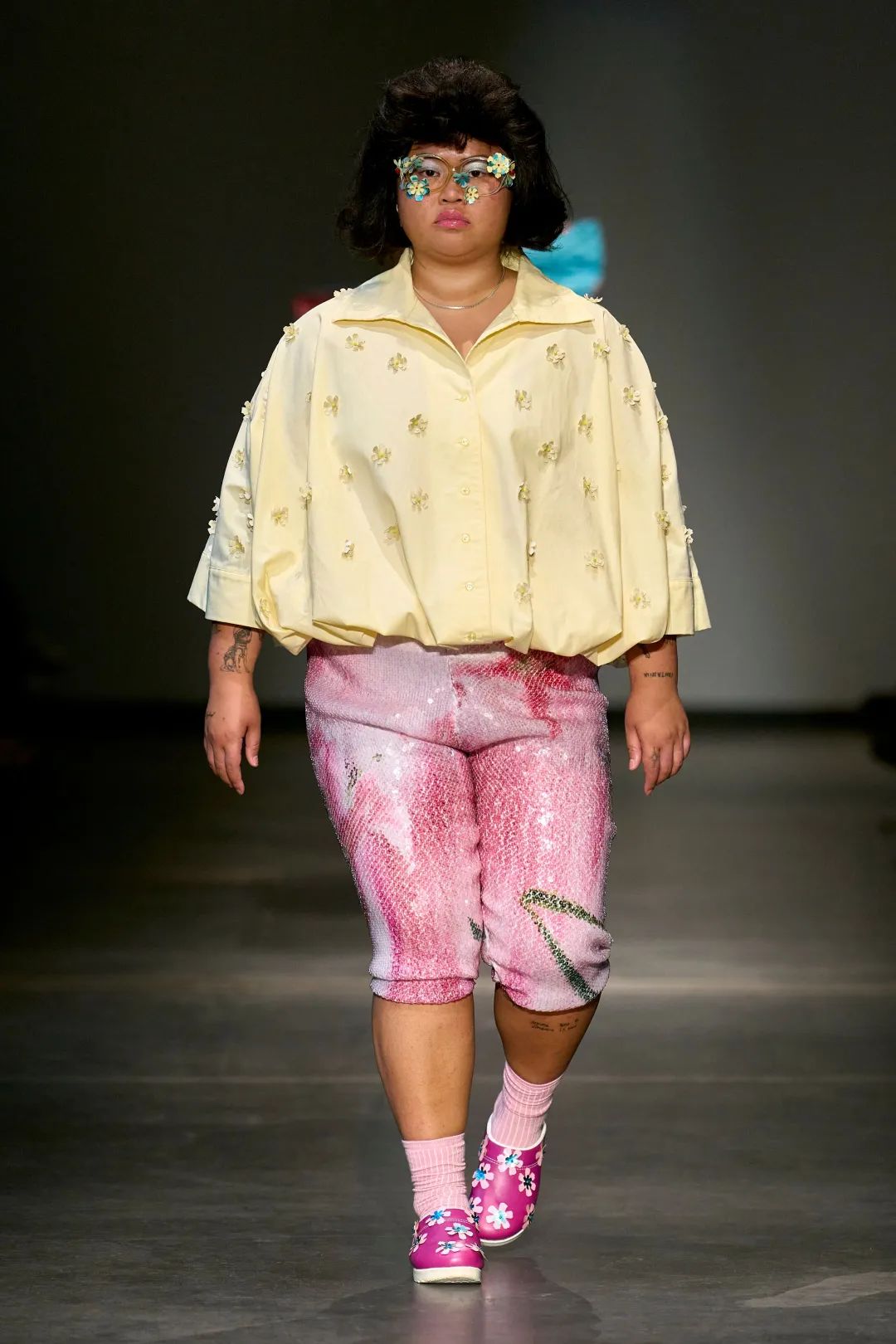
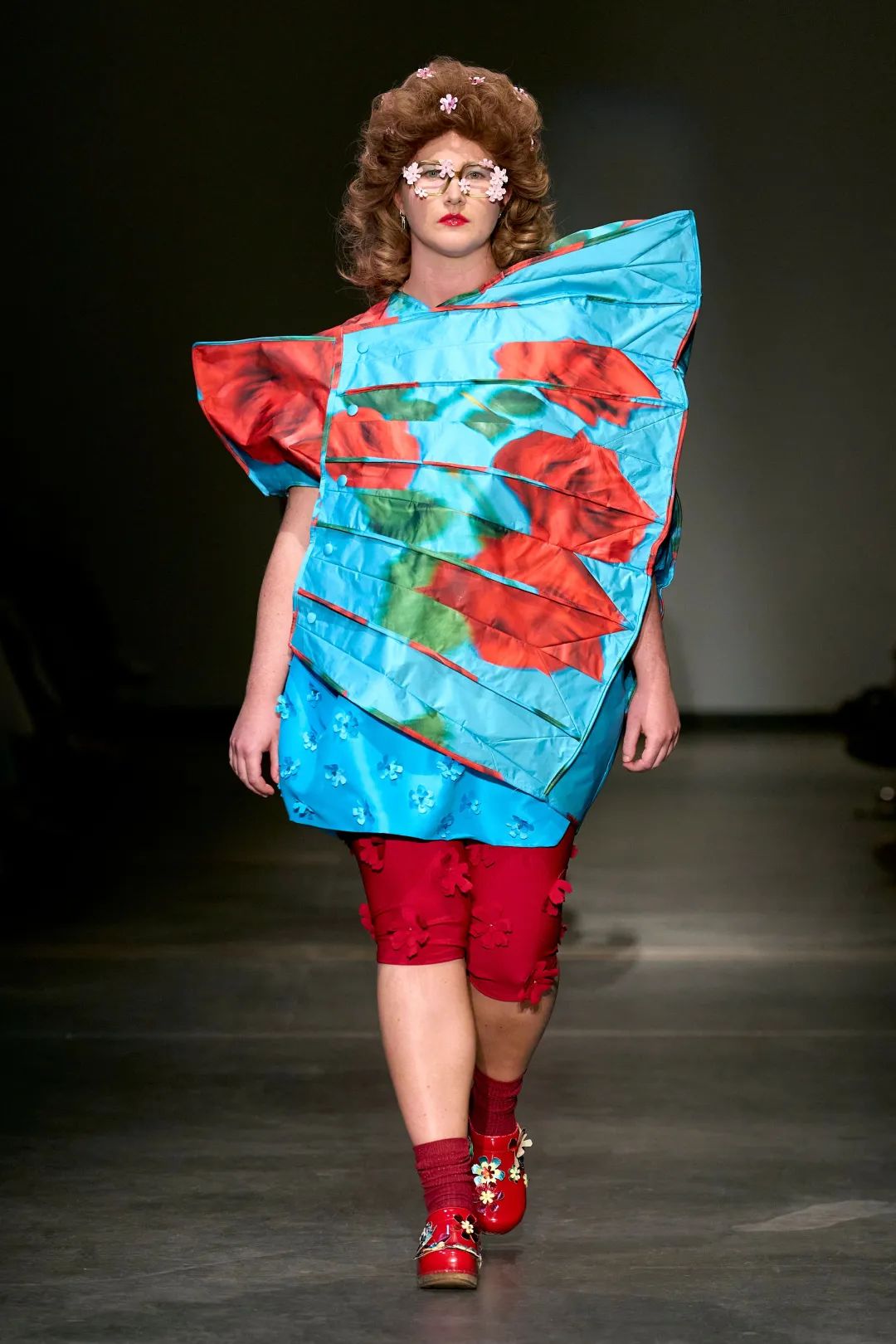

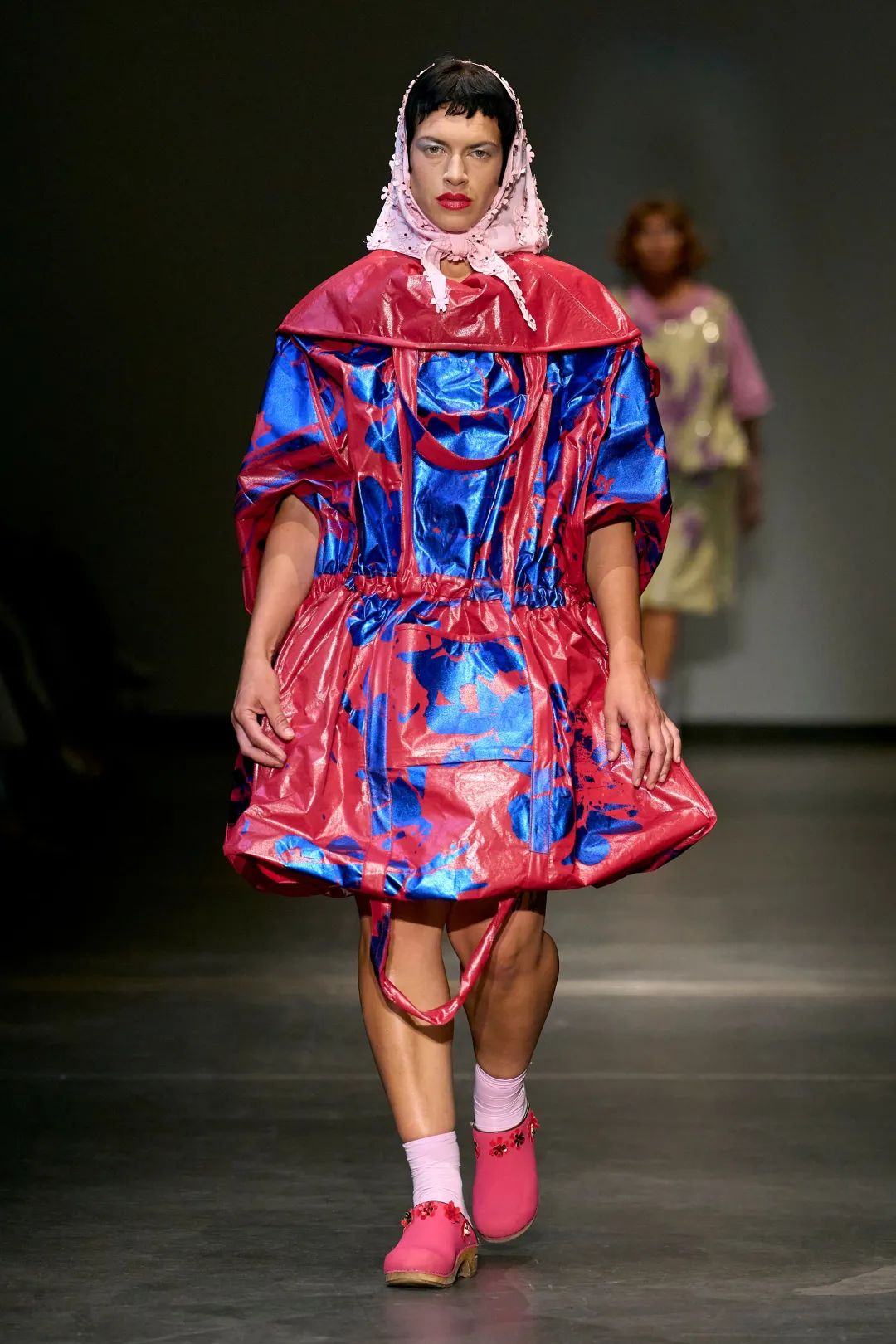
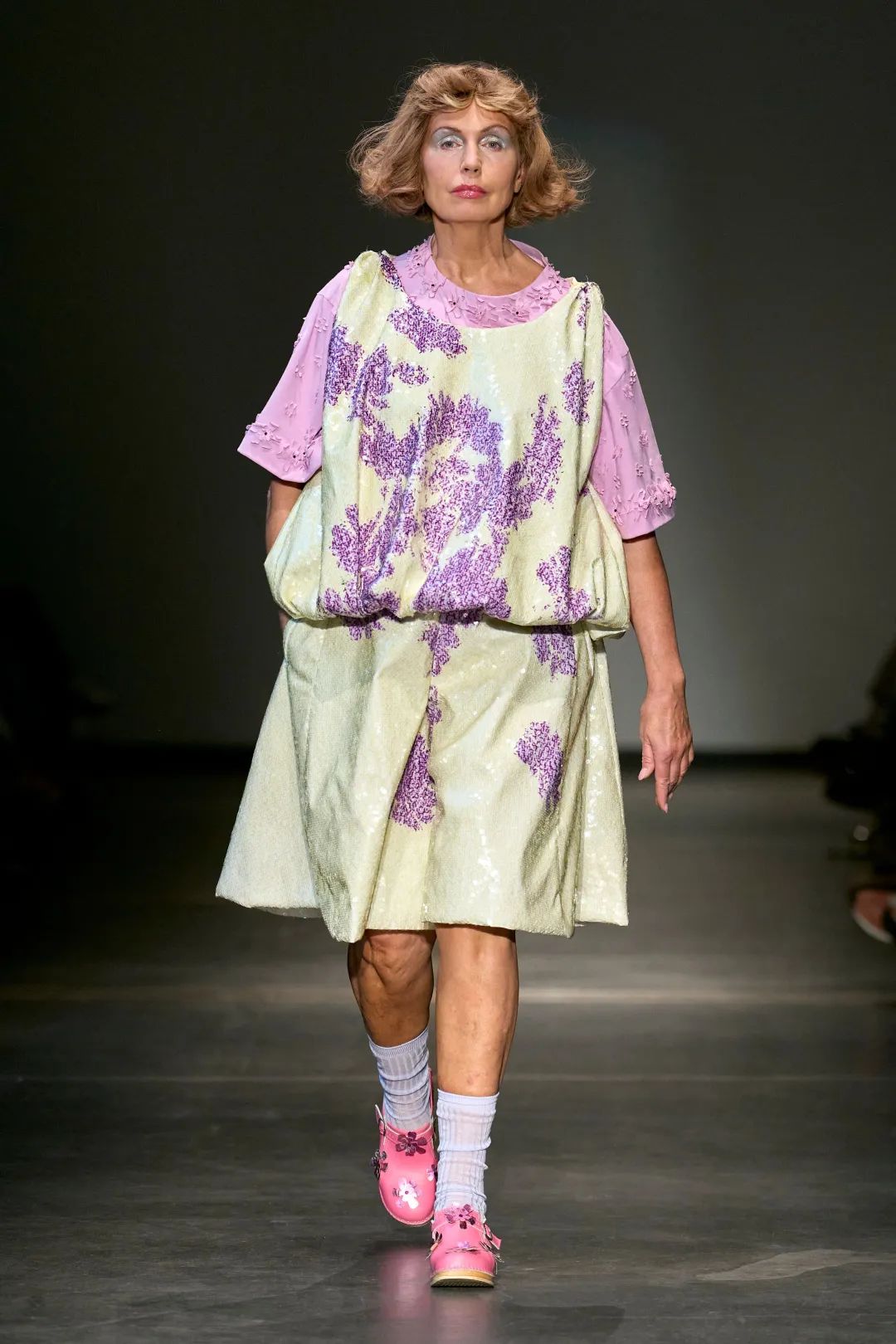
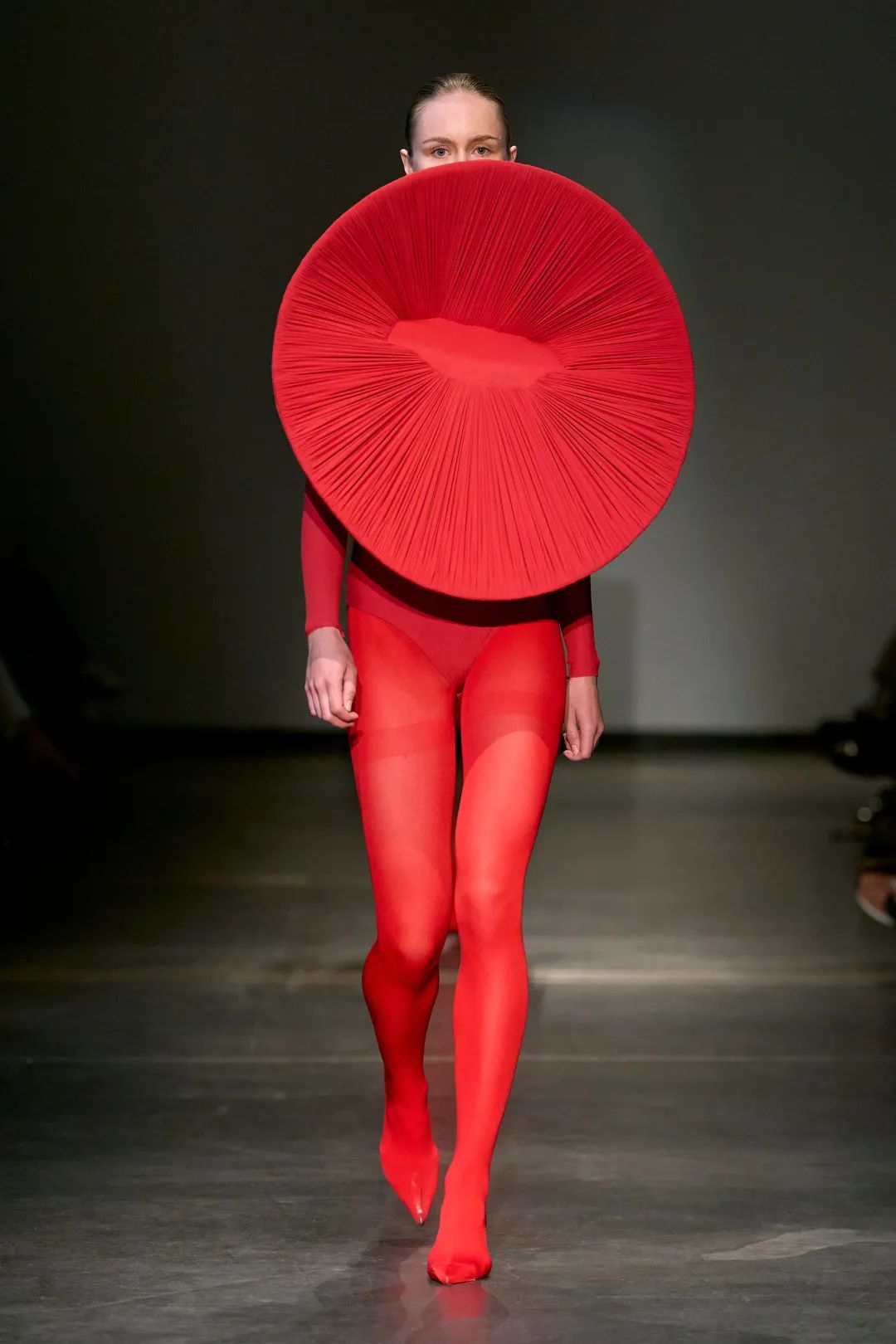
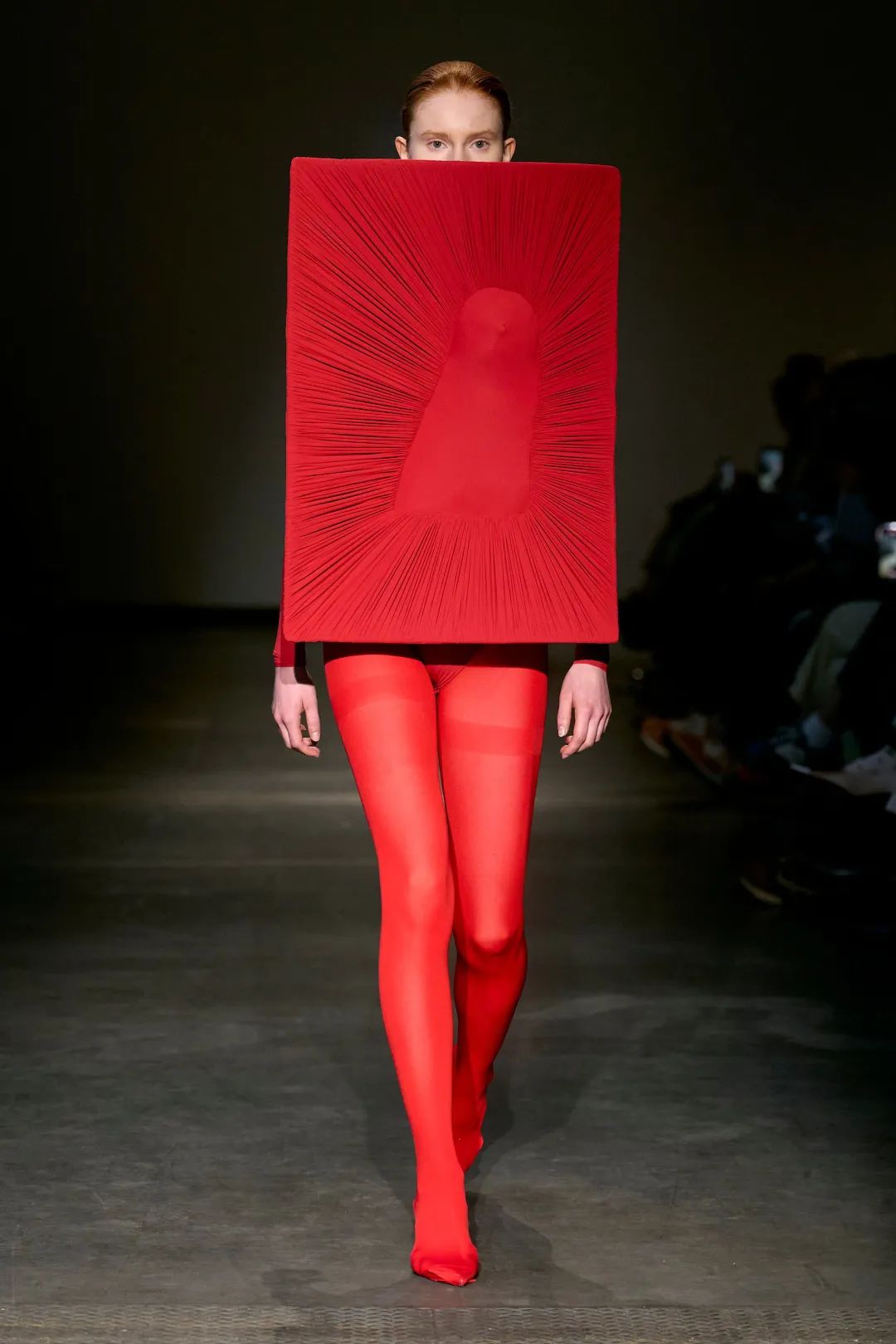
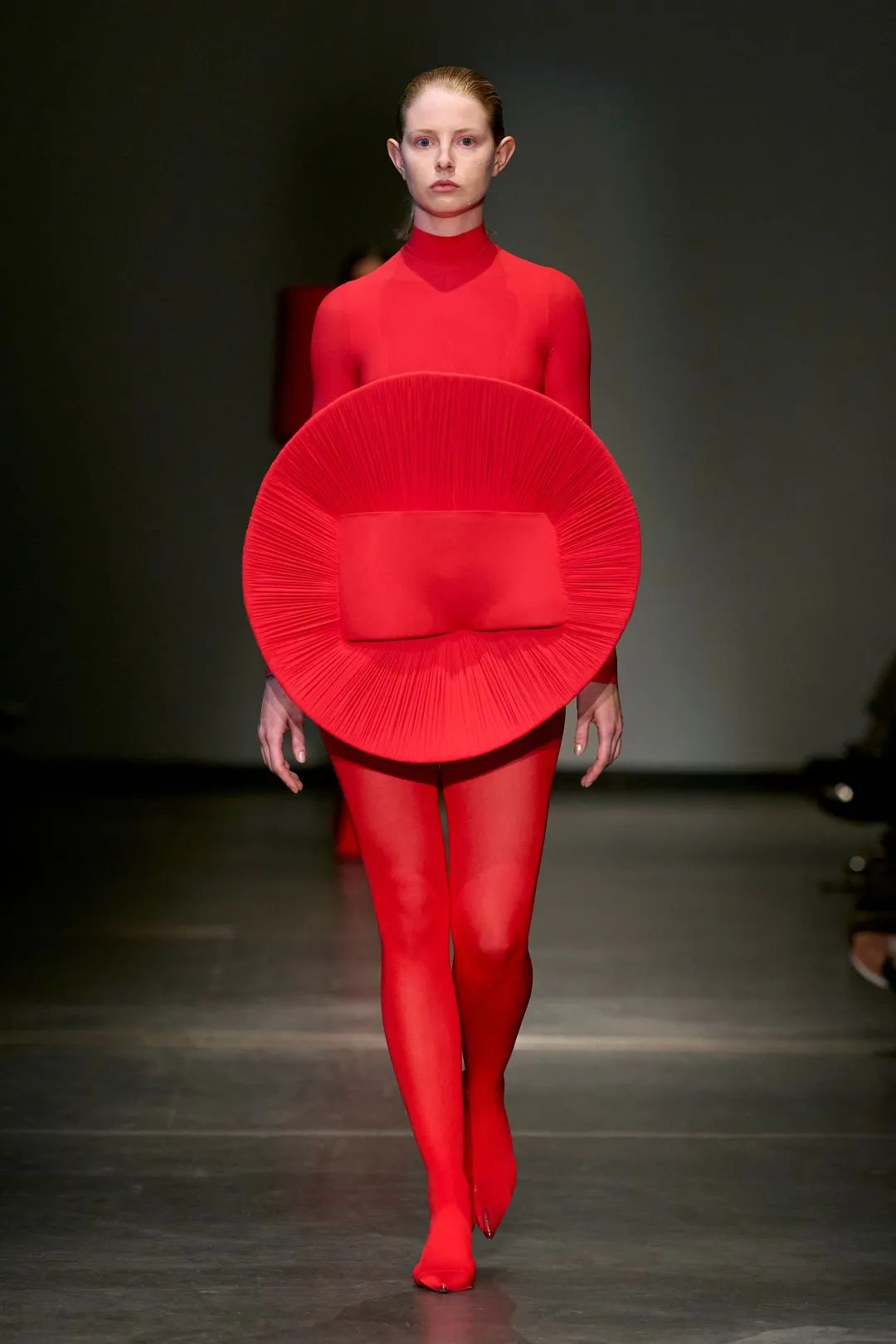
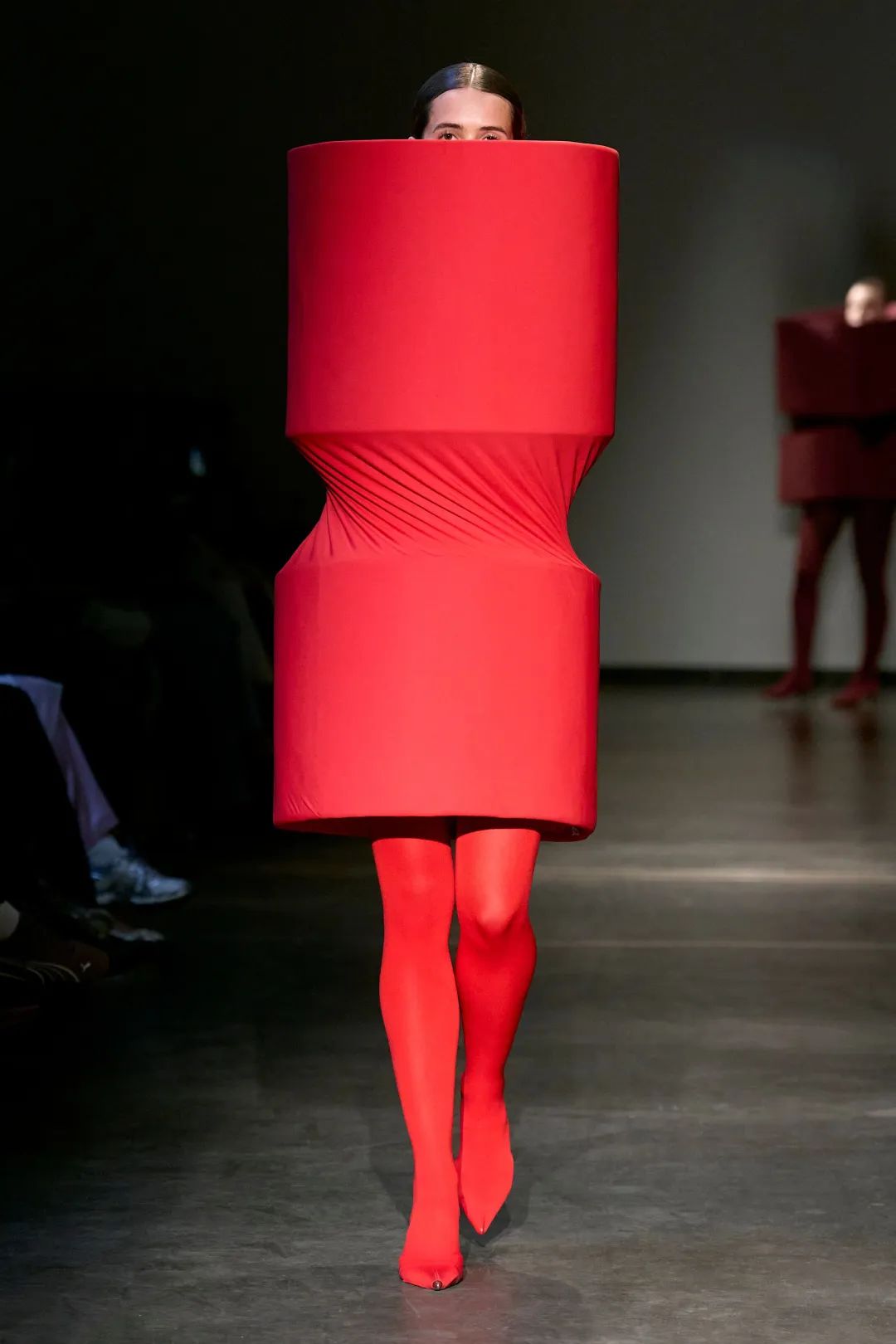
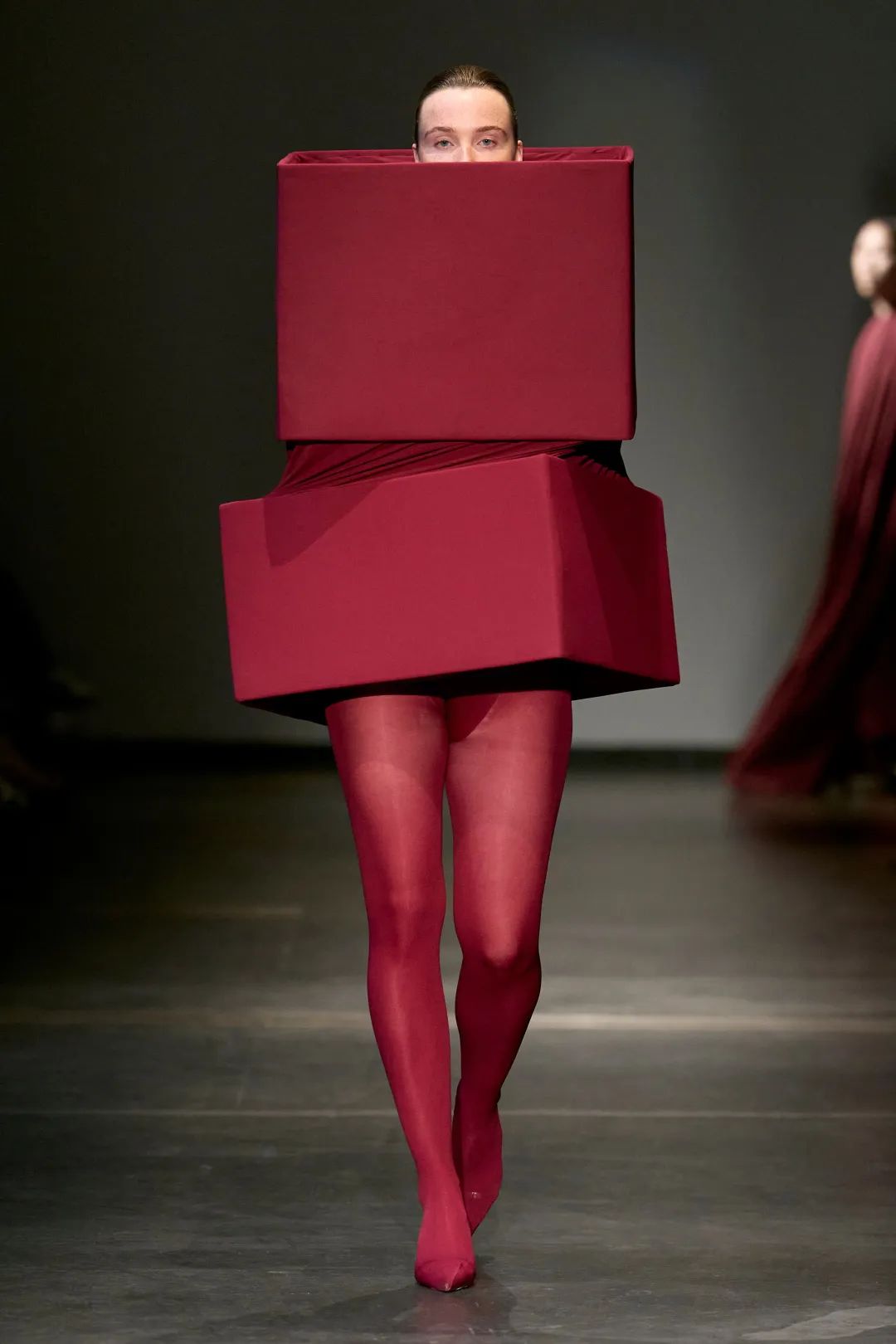
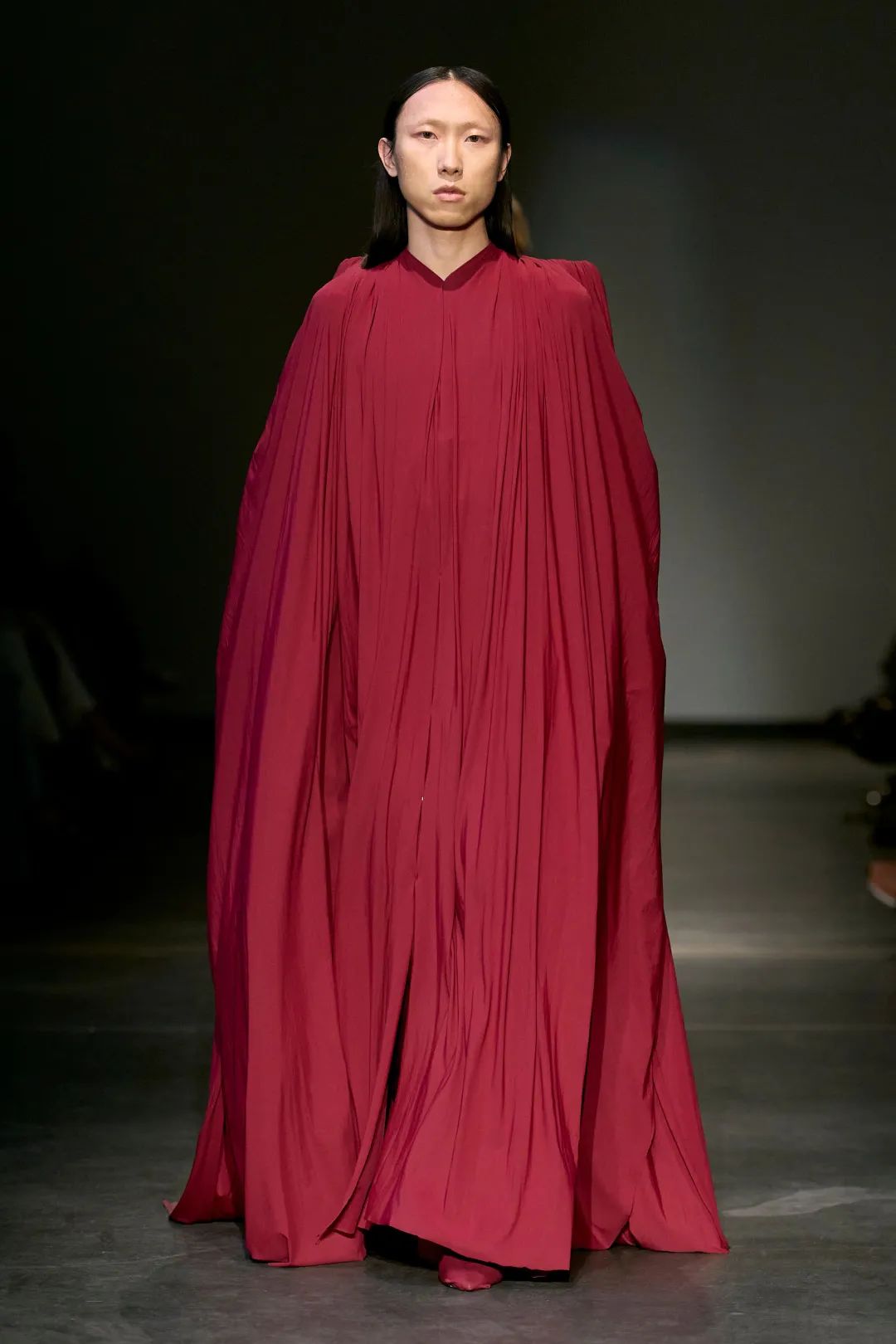
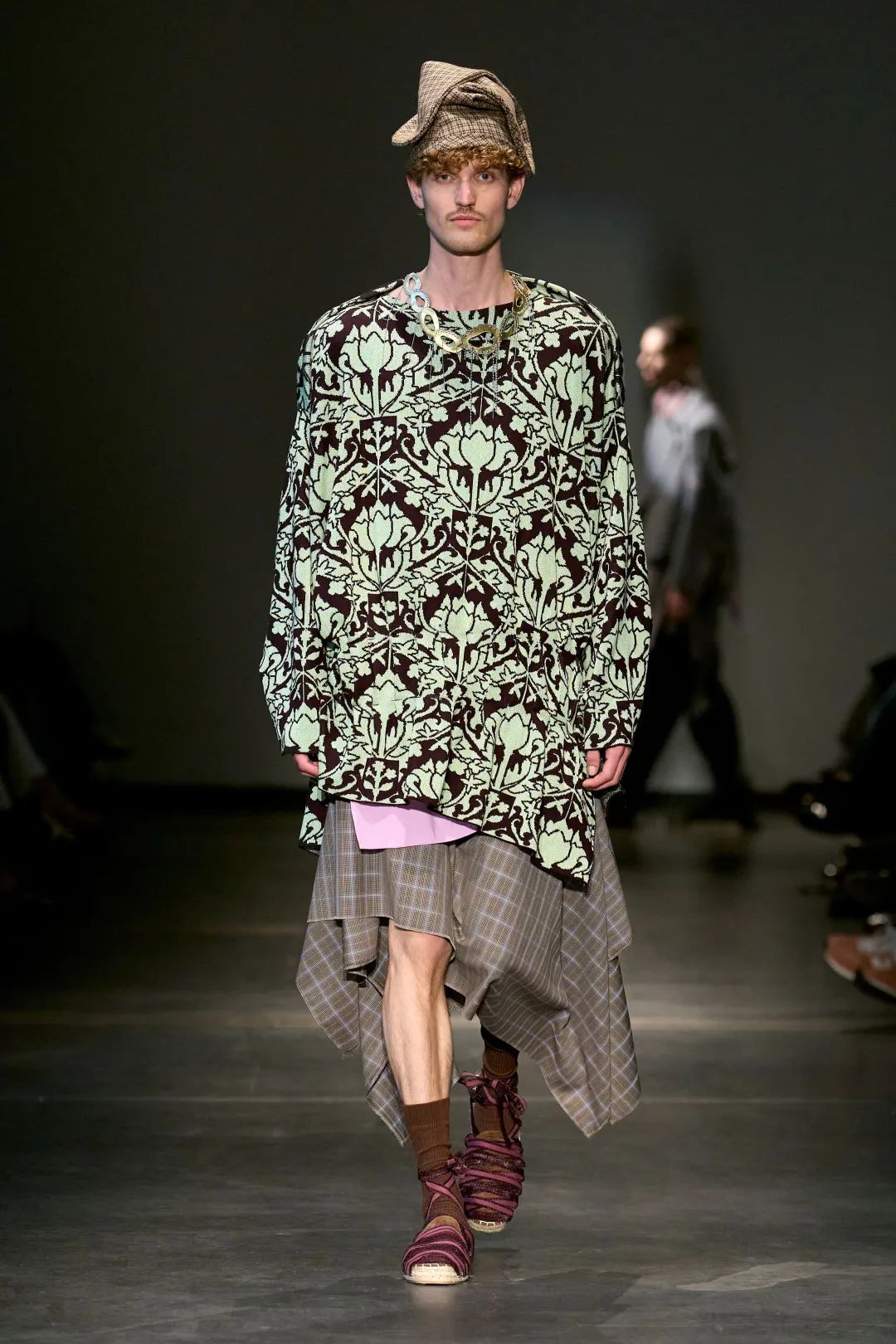
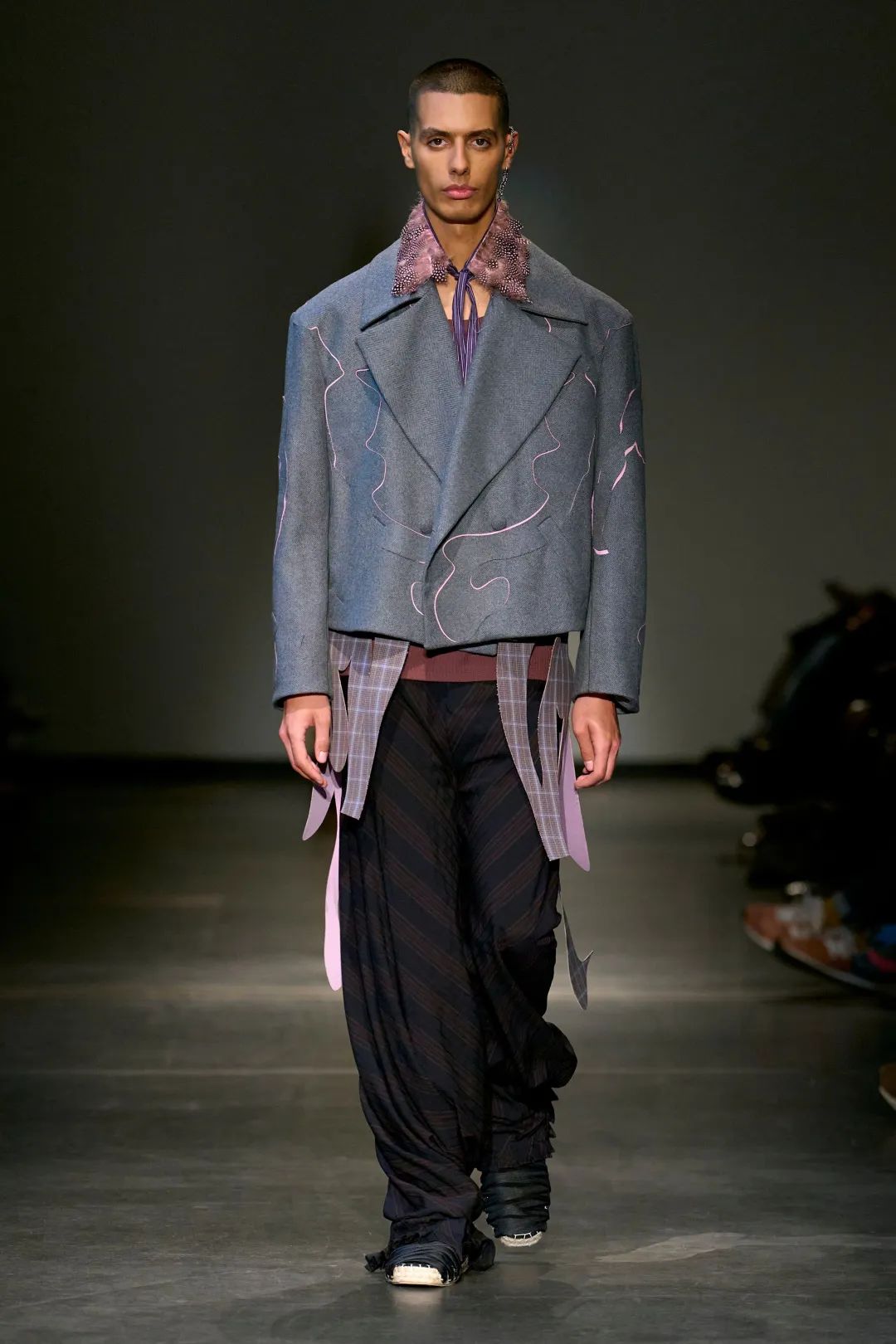
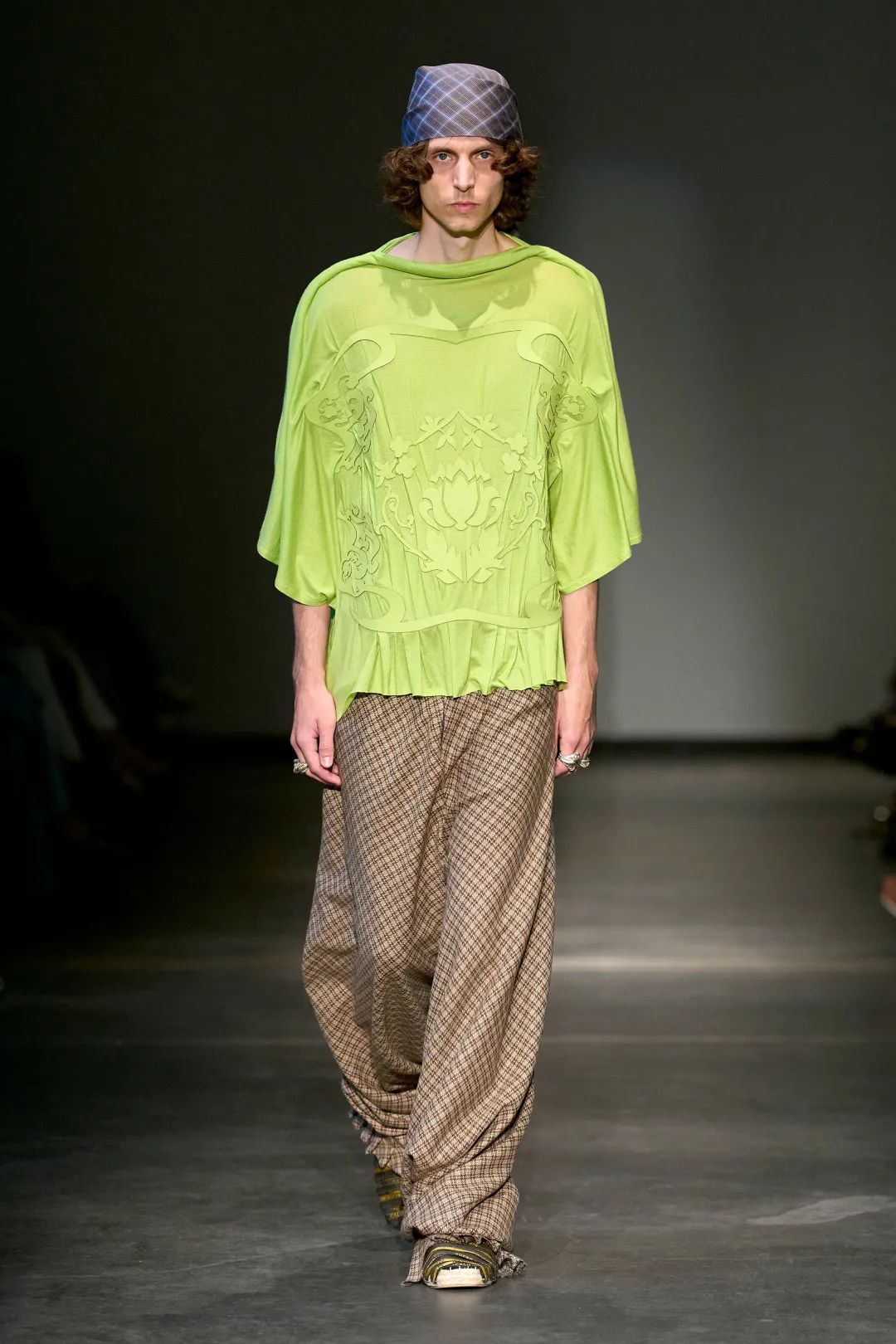
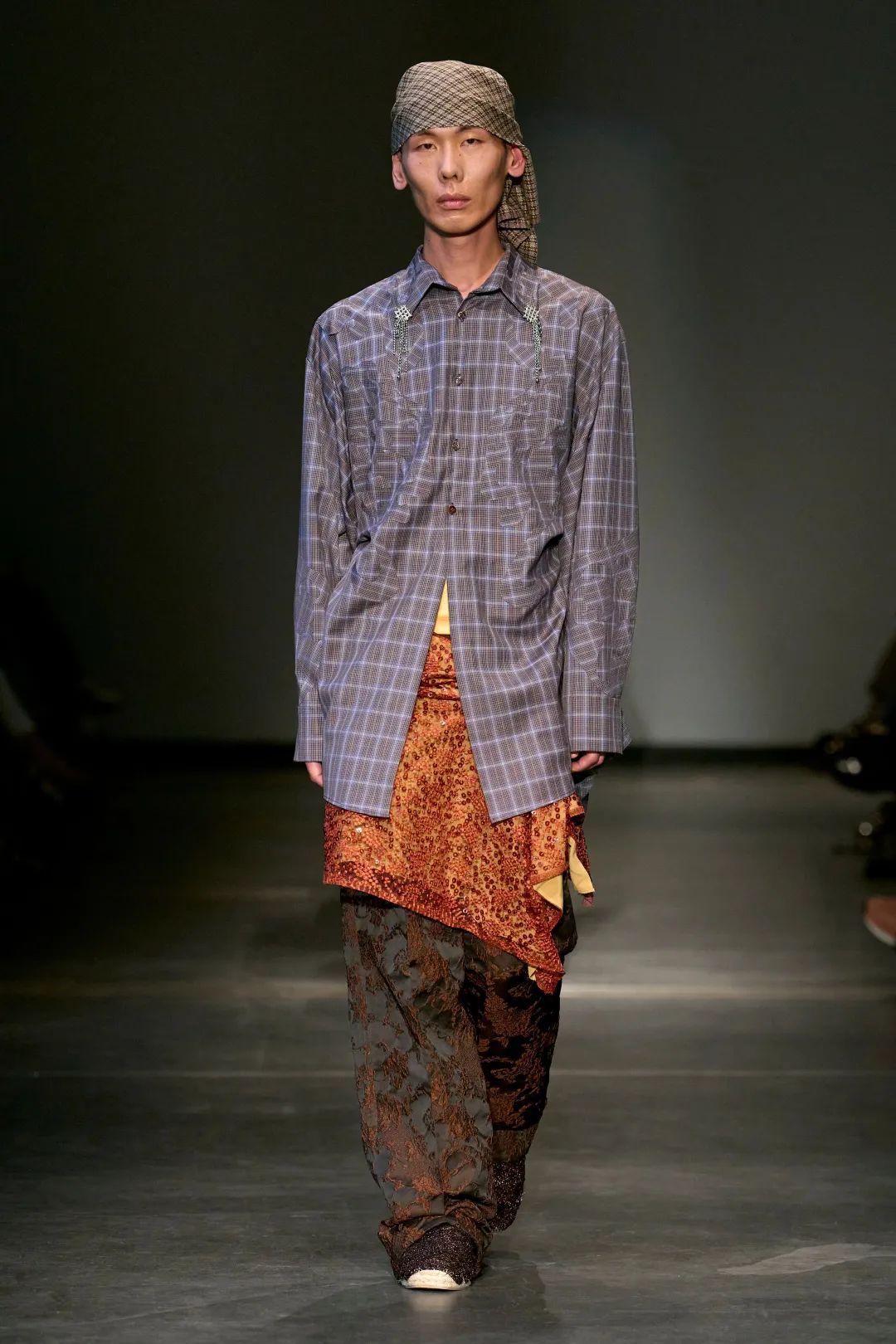
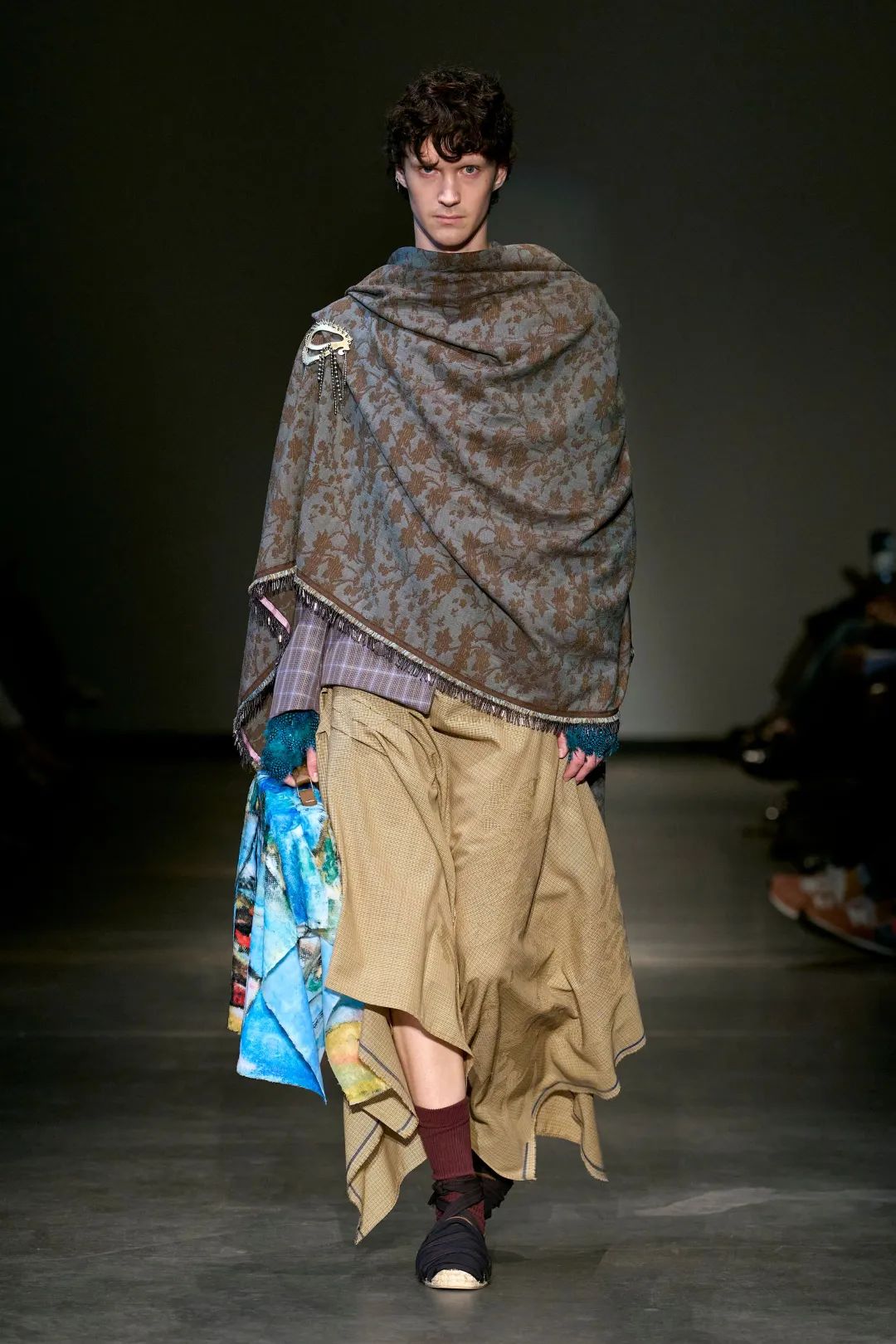
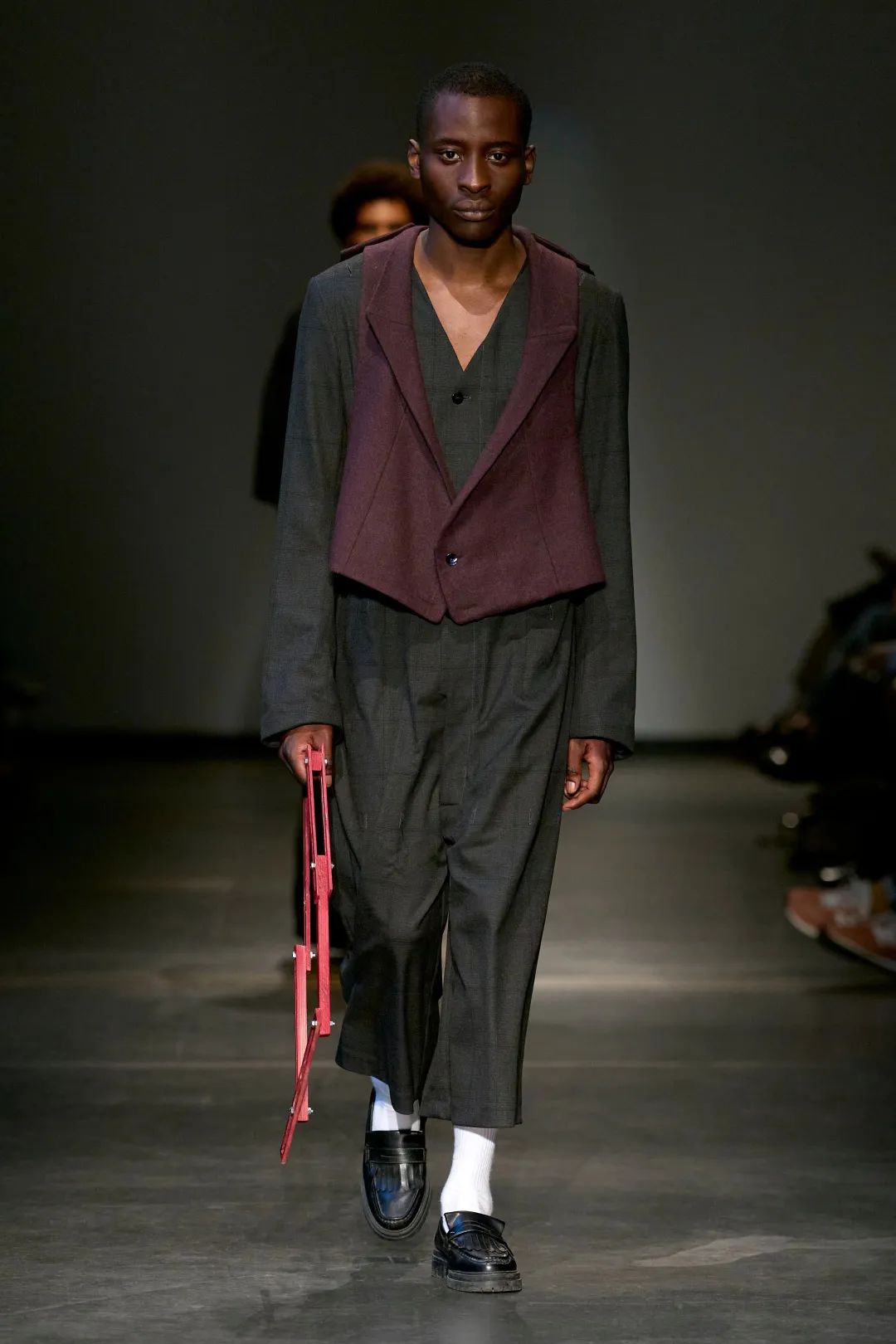
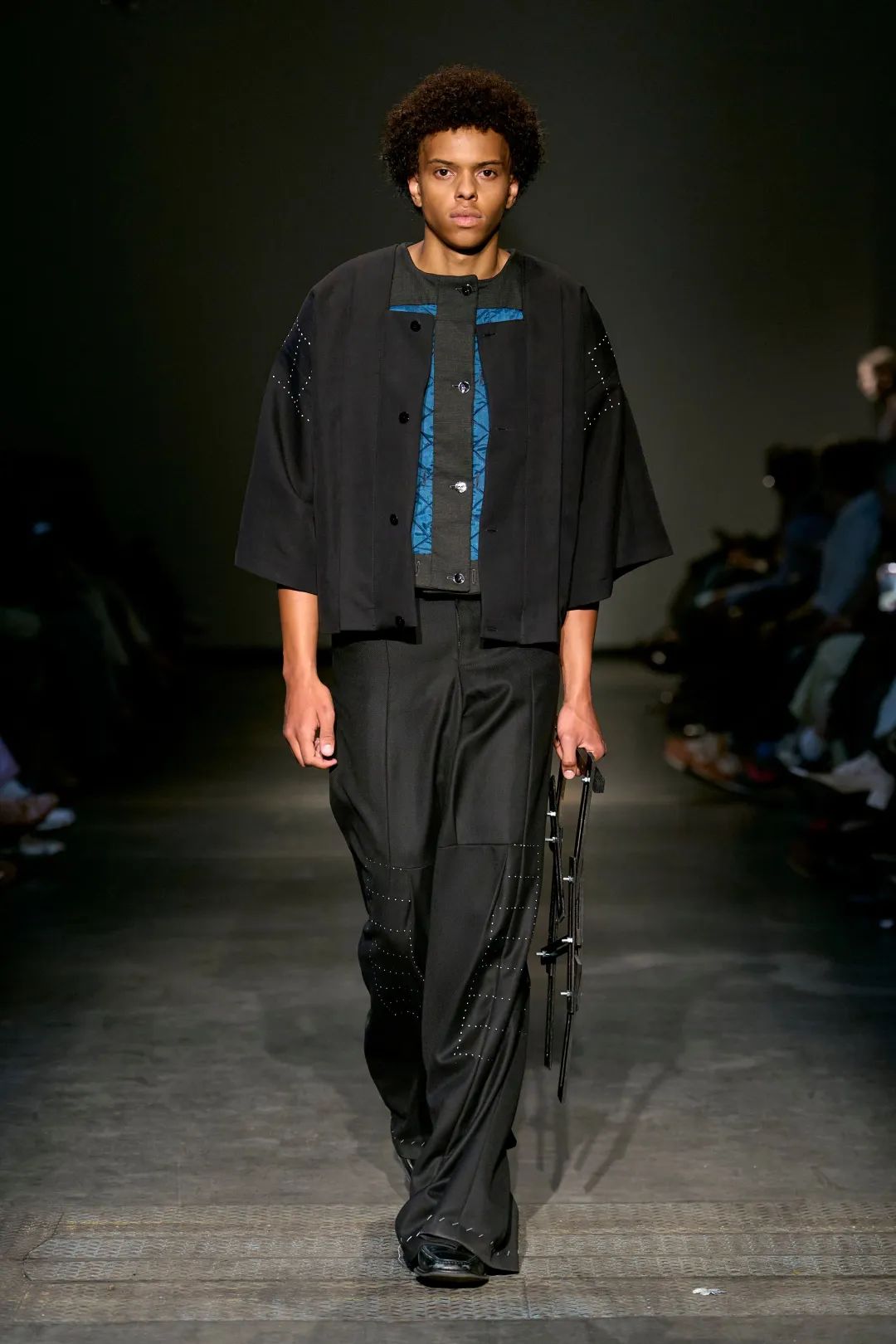
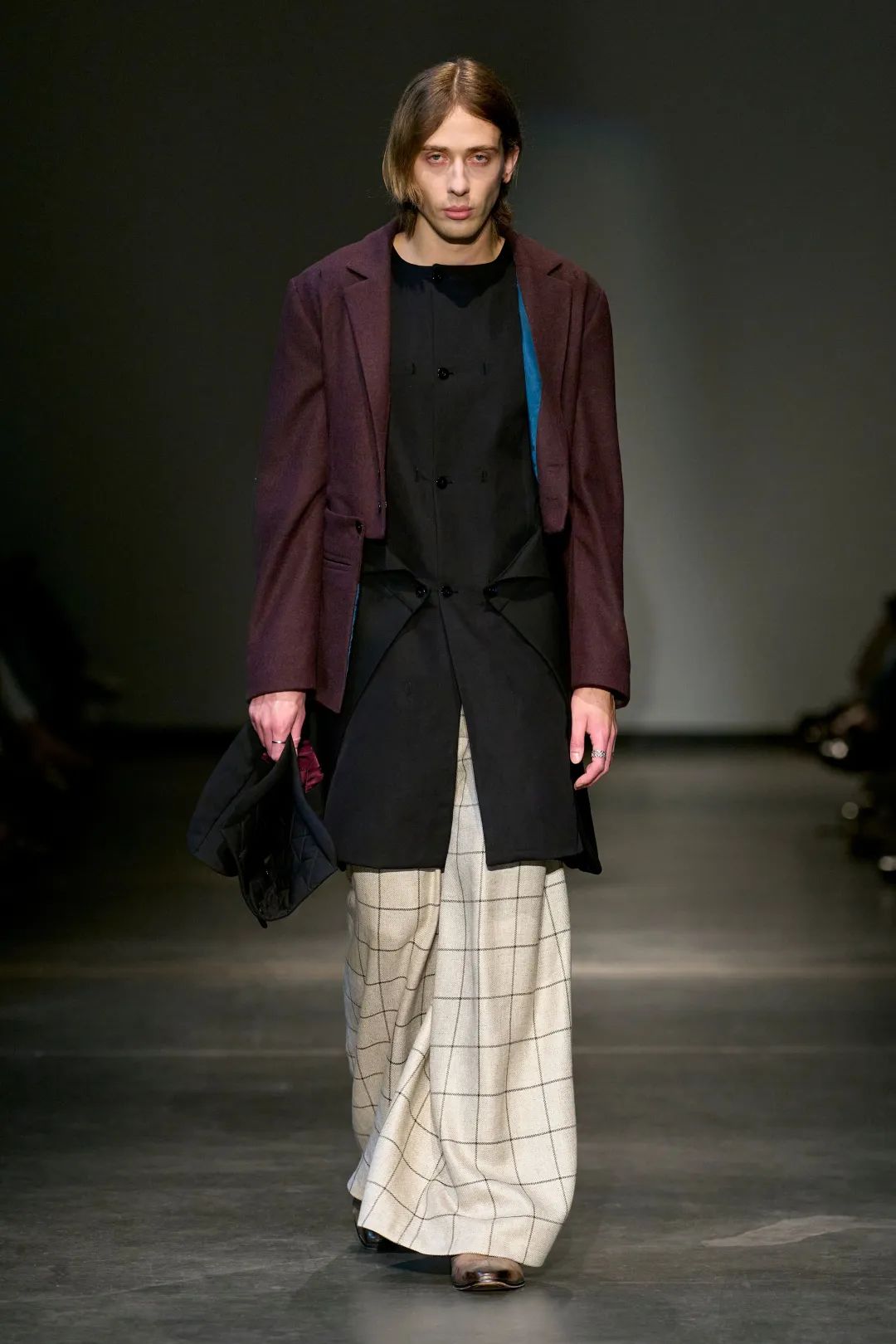

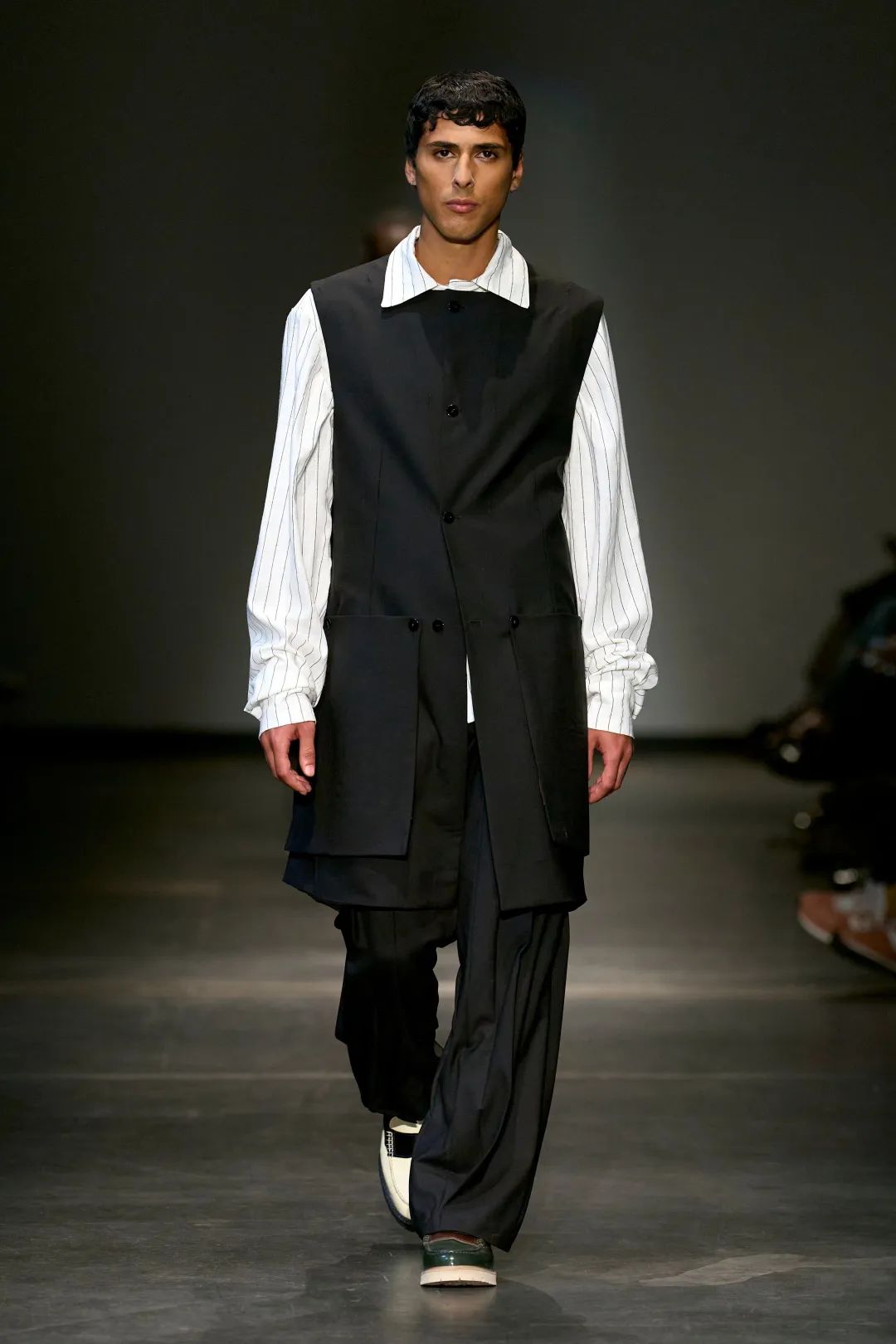
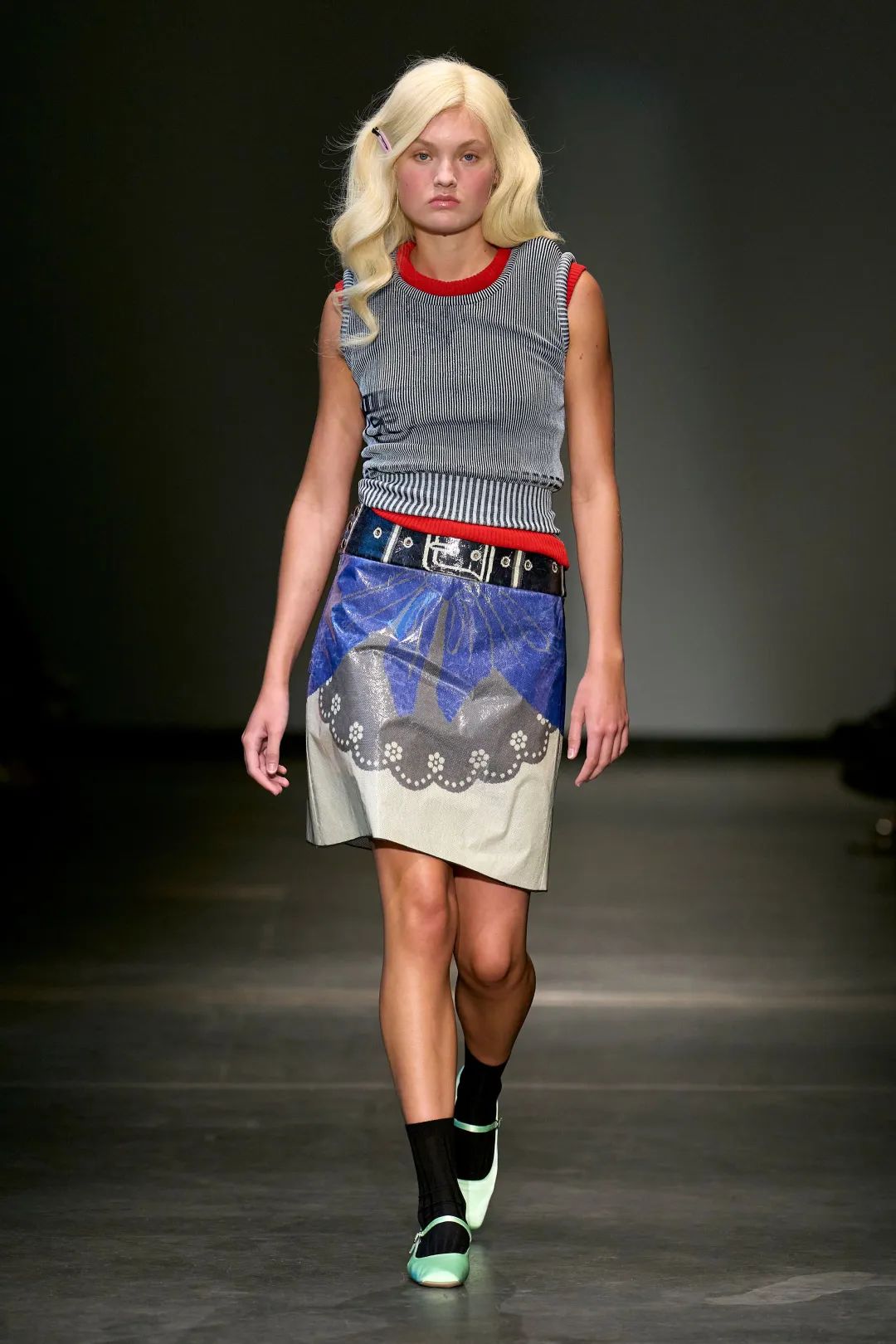

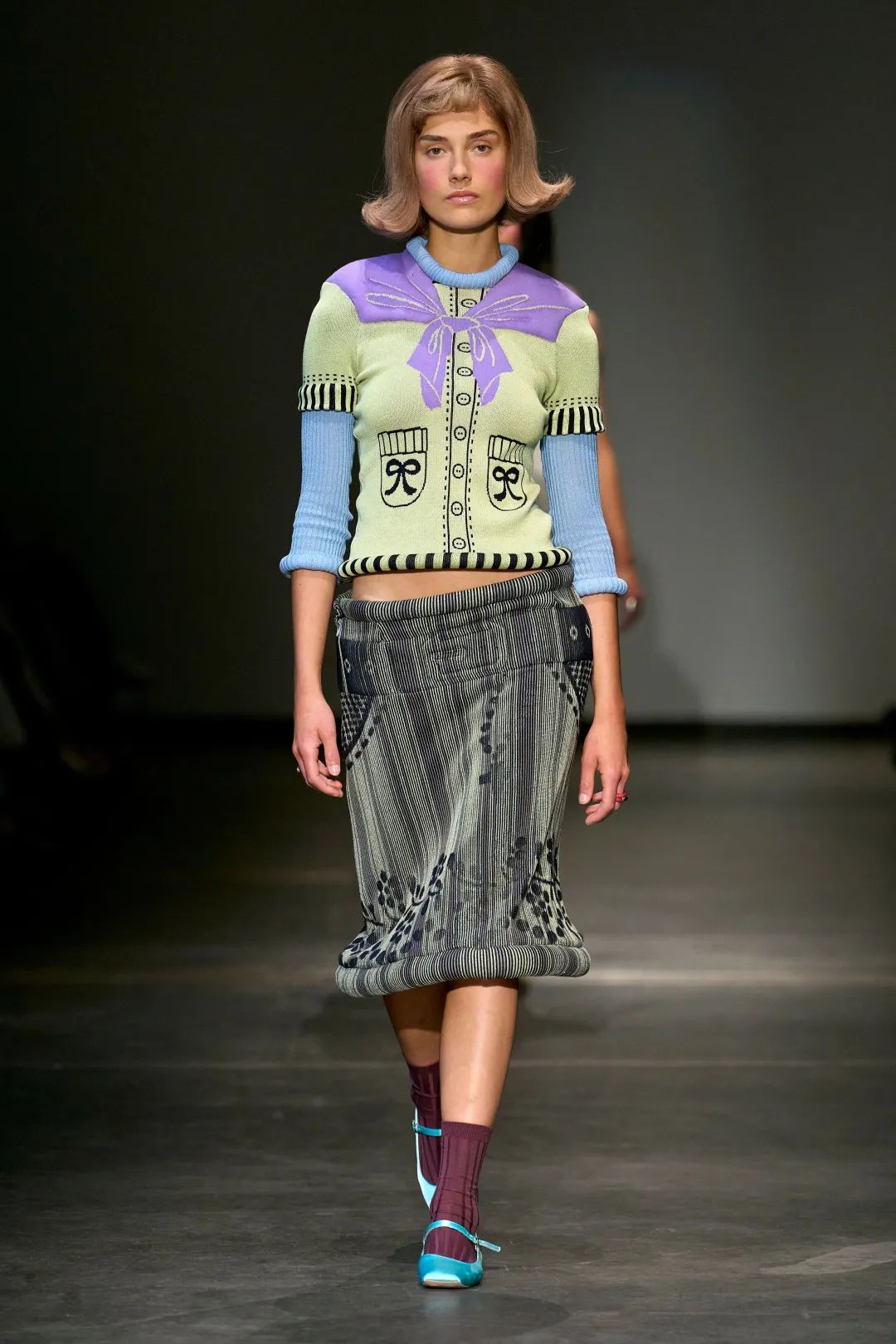
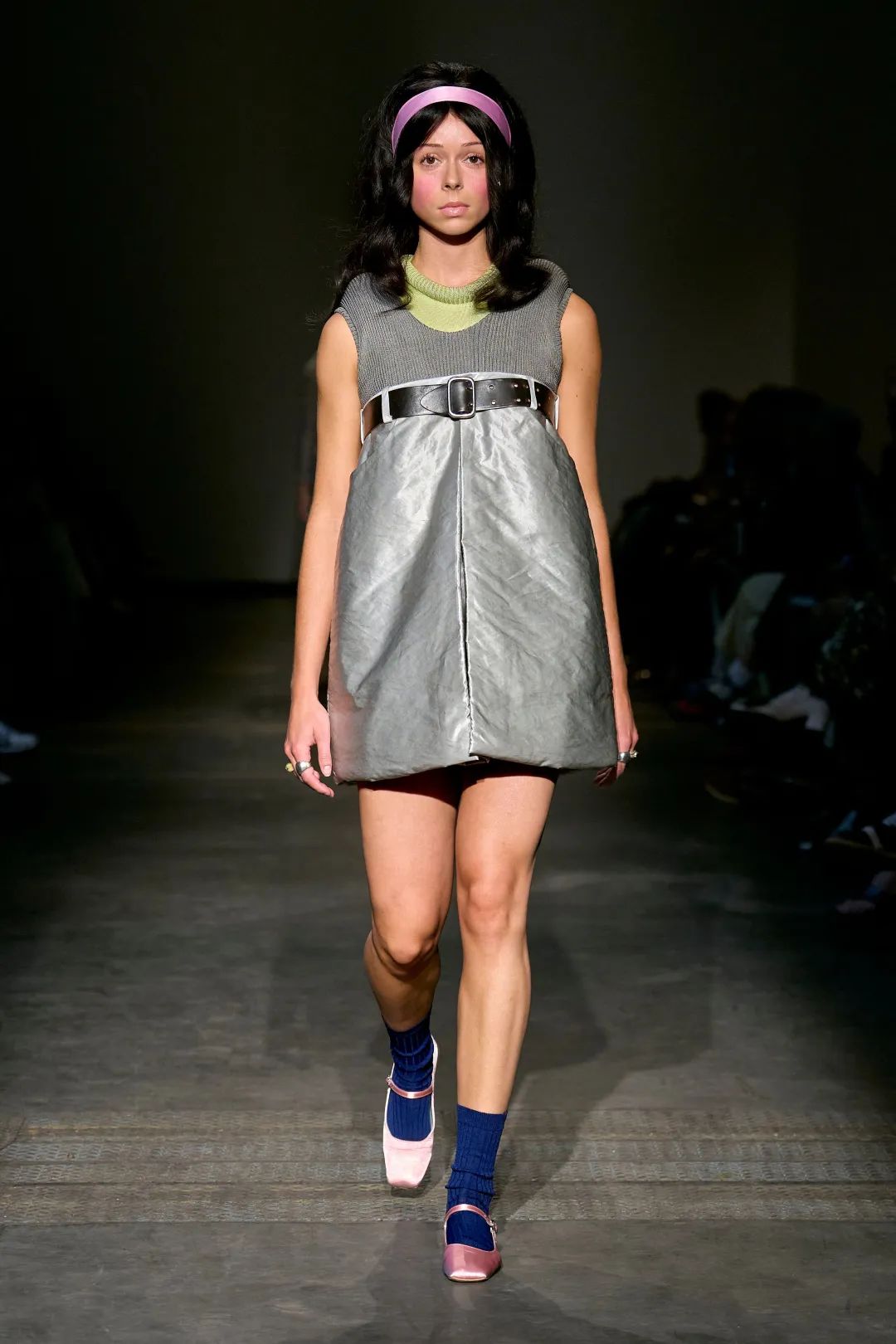
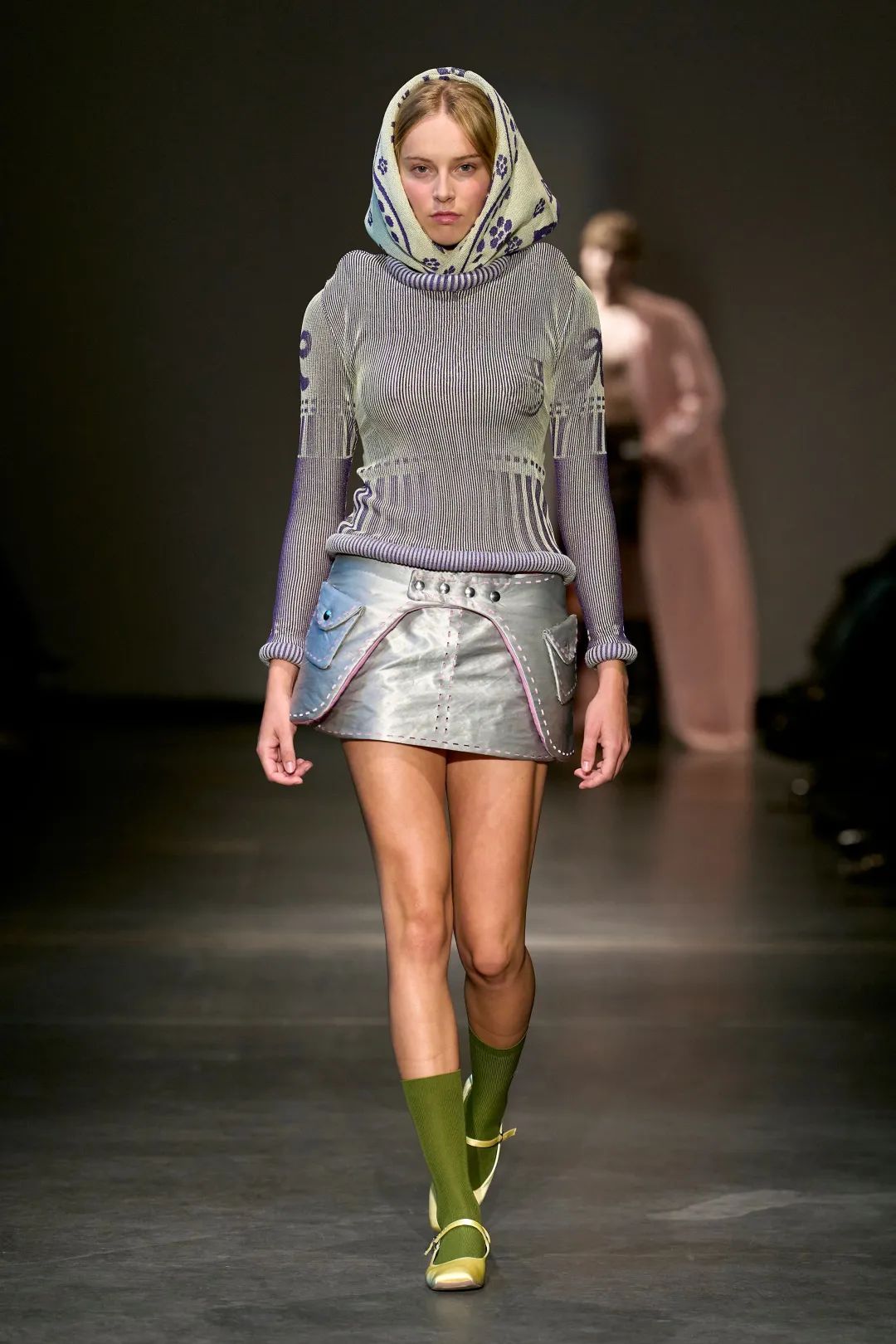
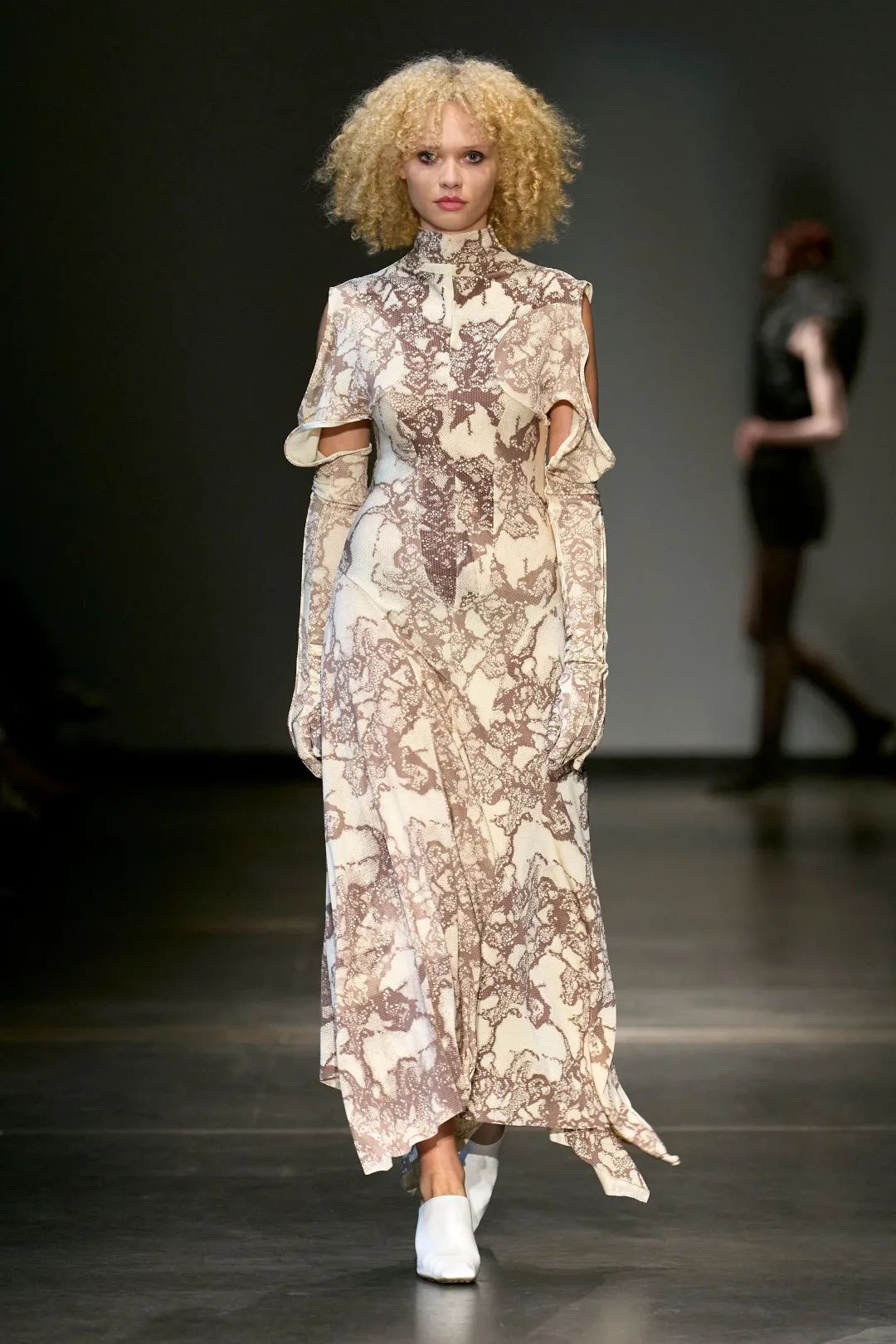
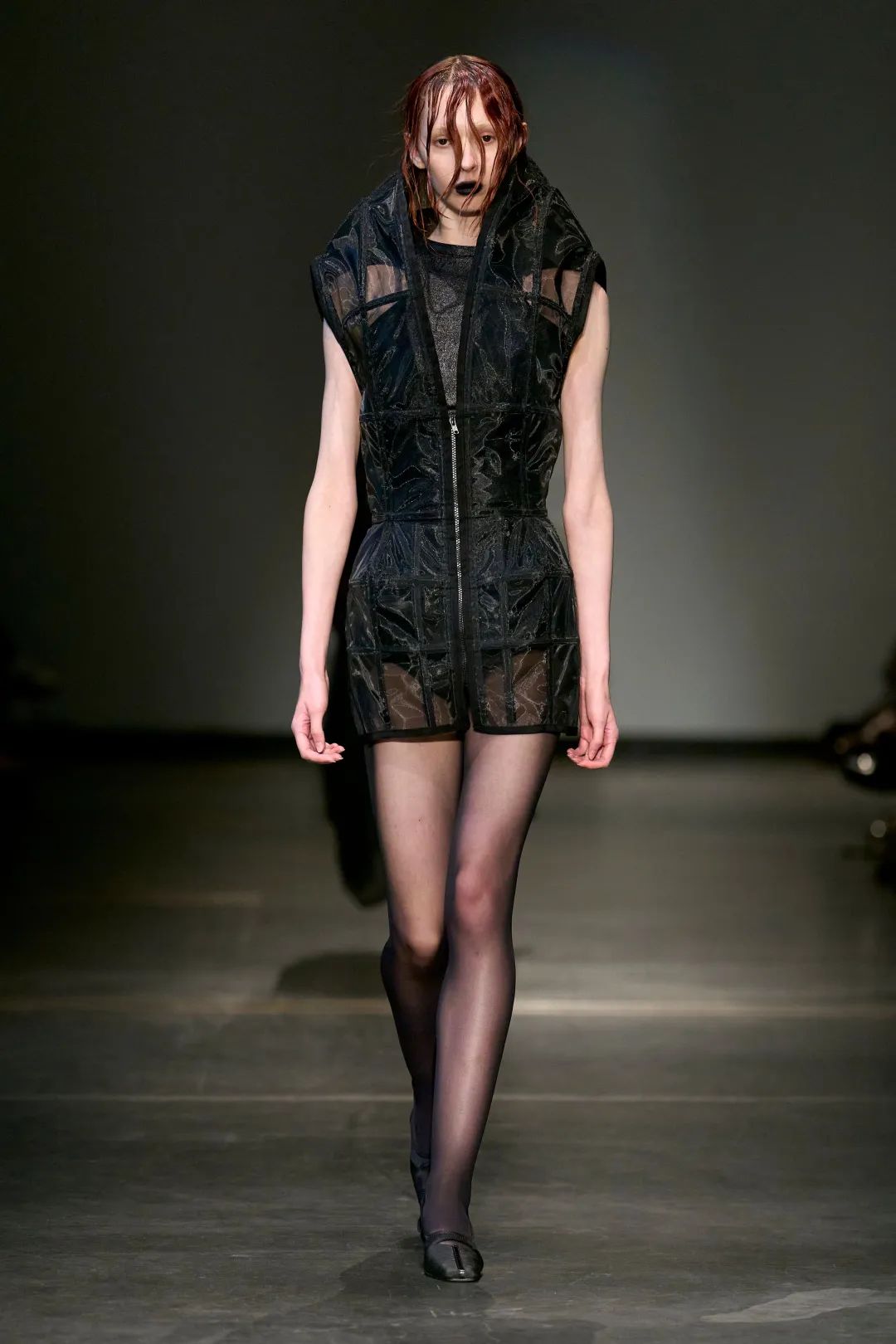
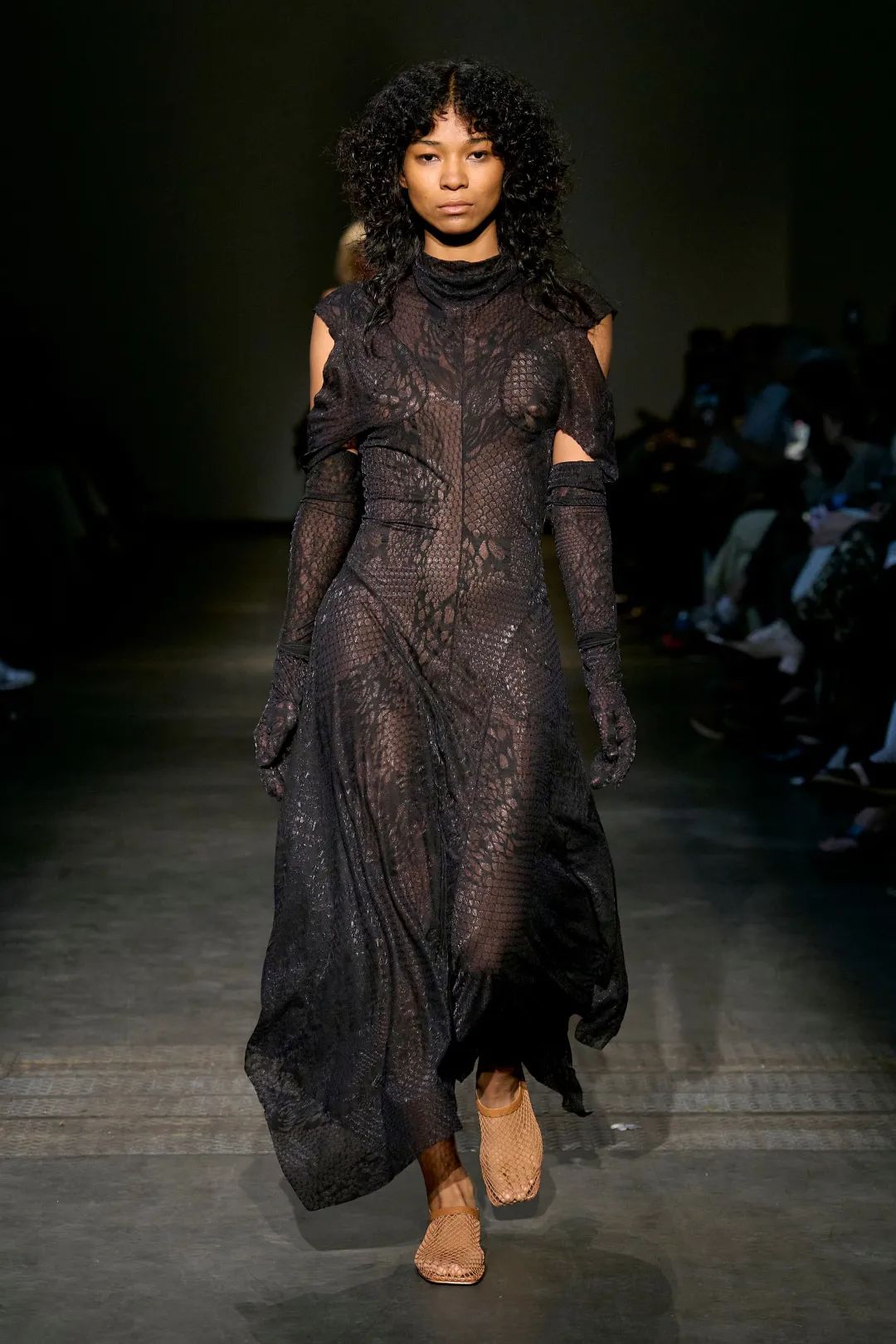
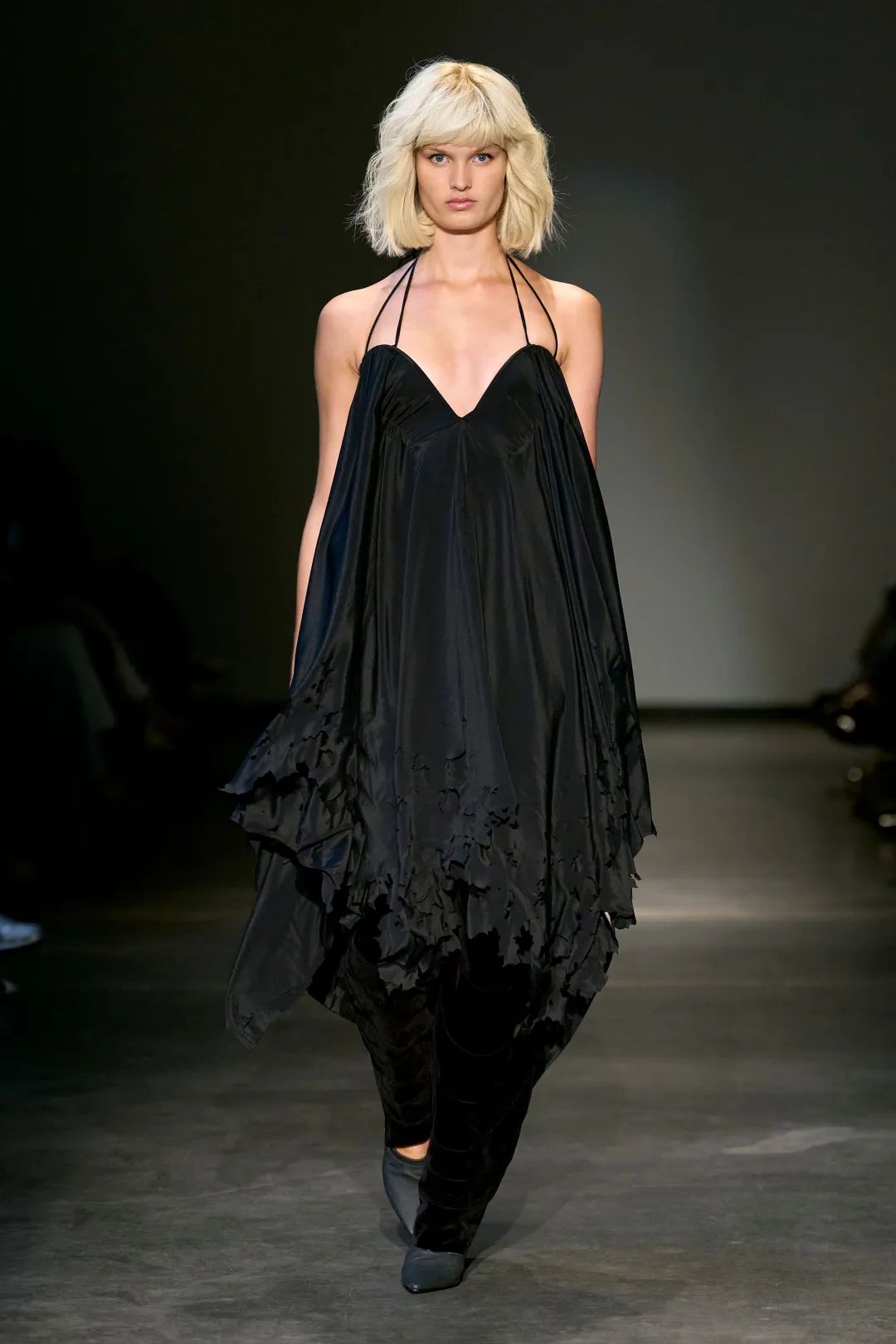
Heritage continues to be a topic students are exploring. Inspired by her Russian grandmother, Anya Belitskaya wrote that she wanted “to challenge Eurocentric ideals of good taste.” Sofia Adell Parramon’s starting point was her grandparent’s house in Catalunya; and Brigitta Timea Szekernyés explored Hungarian folklore using hand and digital means. There was a touch of the surreal to the upbeat designs of Maria Çlara Pontes Leca who combined her Madeiran roots with child- and toy-like motifs.Sofia Munk ruminated on the great outdoors and created digital knits inspired by the ocean, while Leonie Winterhalter stayed closer to home, using draping to translate “the personal atmosphere of the bedroom into wearable narratives.”Jan-Niklas Jessen’s dramatic collection, featuring floral hats, silken robes, and swinging tassels was concerned with the “quiet beauty of early queer expression,” while Niels Frederik K. Petersen took a more pragmatic and technical approach to menswear by “reverse engineering” the blazer. Clémentine Ollivier radicalized traditional markers of femininity, including pearls and polka dots, via designs with thickly rolled hems or ribbon-like strips that make you look—and think—twice. Polina Feddersen’s body-focused collection, called Predation, was about the “monstrous feminine.”Mengjie Hui’s meticulously crafted sculptural garments, on which parts of the anatomy were depicted, were designed to question the relationship between body and garment, as well as “what we consider clothing to be.” In this designer’s hands it is something remarkable indeed.
#毕业设计 #北欧 #时装 #服装设计 #流行 #热点 #审美 #欣赏 #积累 #设计

